>Epona was a protector of horses, ponies, donkeys, and mules. She was particularly a goddess of fertility, as shown by her attributes of a patera, cornucopia, ears of grain and the presence of foals in some sculptures.
>worshipped by people whose primary job function or livelihood depended on horses. Examples include cavalry (naturally Epona was more popular among the cavalry alae than among infantry), scouts, dispatch riders, mule drivers, carters, stable hands and grooms.
>Oddly, Gauls are not especially prominent in these units, but troopers originally from Germania Inferior are strongly represented [Dixon]. The maps show few Epona representations in the province of Germania Inferior itself. This is an important finding, and seems to indicate that Epona was worshipped, not so much because she was a native Goddess familiar from before joining the army, but because she formed part of the cultic esprit du corps of some of the Roman Army units.
>emperors mounted bodyguard, originally called the Germani Corporis Custodesand later reformed as the >Equites Singulares Augusti. The latter were so much associated with a Germanic origin that they were frequently called the Batavii, the name of a Germanic tribe living on an island in the Rhine
Several things must be mentioned here, so I will point the big two:
>fertility
>the Germanic relation
First off, fertility is imperative for the survival of the West. In a state in which our fertility rates are pathetically low, the quality of such has to be revitalised in a positive cultural sense. Else we suffer the dire consequences. We must celebrate it as we celebrate the love of equines, and Epona is the bridge between. In fact, it could be said that we already do practice worship of this deity; we follow certain traditions that replicate the worship of her the same:
>Several of the Epona depictions are small, portable bronze or pipeclay figurines.
>Moulded pipeclay figures were cheap to make and widely available
>These were probably used in a domestic or workplace shrine
However, followers of Epona (if you were to become one) should intensify their devotion and begin to commonly associate their worship of horses with the Goddess. You see, I believe that the My Little Ponies are powerful enough vessels to carry the proxy devotion to Epona. Acts such as waifu-ism, affection, and creative display can be enhanced by acknowledgement of a divine figure, further increasing real life projection of influence.
>At all periods of the Roman empire the cavalry was primarily formed from foreign auxiliaries rather than Italian troops, so the ethnic composition of these cavalry units was quite mixed.
Now, notice this isn't purely Germanic nor of any specific ethnicity, except perhaps that the belief was helped spread by Rome. The name itself is Gaulish, which is apart of the Celtic langauge family. However, notice in this map it is concentrated mostly in the Germanic and Gaulish areas. Now, why is the Germanic connection important? Because, our contemptorary part of the rightwing sphere owes itself a lot of inspiration from the Deutsch people. First, look to Adolf Hitler and National Socialism. Then, to who he derived his ideology from Nietzsche, and Schopenhauer. To Spengler, to Heidigger, to Kant. And, etc... Our little Aryanne is even German. Now, again remember that the Third Reich saw an insurgence of occultism. We are following in the footsteps of those before us. Let's take one, shall we?
Sources: epona.net
(((wikipedia)))
/mlpol/ - My Little Politics
Archived thread
1506992277_1.png (393.2 KB, 2500x2500, 1209282__safe_artist-colon-graboiidz_black and white_earth pony_epona_female_grayscale_mare_monochrome_ponified_pony_saddle_smiling_solo_tail wrap_the .png)
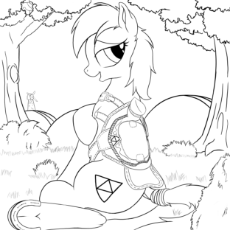
1506992277_3.png (1.3 MB, 1954x2250, 975206__safe_artist-colon-ardail_edit_blushing_cropped_cute_earth pony_epona_female_looking at you_mare_nom_ponified_pony_side_simple background_smilin.png)
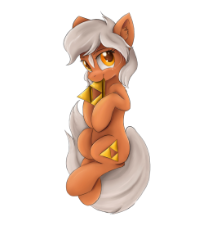
1506992478_1.png (820.5 KB, 1516x1200, 680577__safe_crossover_ponified_speech bubble_the legend of zelda_link_grumpy_epona_artist-colon-cogbrony.png)
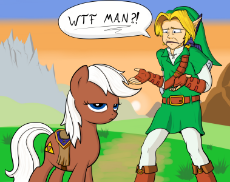
I remember someone bringing up Epona as a horse goddess around the Trump election last year on /mlp/ when the Pepe spiritualism went into overdrive on the internet. They tried to found a relation to IRL gods to create a similar memetic following for her. I never knew what came of it.
>tfw I was halfway through making this exact thread, only to see someone else do it better.
>Hivemind.jpg
PRAISE EPONA!!!
Those Celts really knew where it's at.
>Hivemind.jpg
PRAISE EPONA!!!
Those Celts really knew where it's at.
>>79705
Not much, but in small circles I and others have established a Cult of Epona. It's easy to associate waifufaggotry with, and that's how I hrope more people into it privately. In general, it's another religious aspect in my life I have taken in part to make my Nietzscheanism a bit more flavourful. I occasionally splice a bit more Paganism along with it, but most of that just involves enjoying nature for what it is, and personifying it as well. Also, Equestrian afterlife. I dabble in that, and I am kind of hopeful that one person who said he had died for a couple minutes had actually gone to Equestria.
>>79708
I was actually halfway done with making this thread hours ago, but I decided to go on a walk.
Not much, but in small circles I and others have established a Cult of Epona. It's easy to associate waifufaggotry with, and that's how I hrope more people into it privately. In general, it's another religious aspect in my life I have taken in part to make my Nietzscheanism a bit more flavourful. I occasionally splice a bit more Paganism along with it, but most of that just involves enjoying nature for what it is, and personifying it as well. Also, Equestrian afterlife. I dabble in that, and I am kind of hopeful that one person who said he had died for a couple minutes had actually gone to Equestria.
>>79708
I was actually halfway done with making this thread hours ago, but I decided to go on a walk.
>>79703
I'd like to discuss something that keeps popping into my head with the whole waifuing being a form of worship of Epona. I am reminded a lot of the the whole dinner with your waifu images that pop up around valentines day, surprisingly if pony waifus are viewed as a proxy for Epona then a ritualistic sacrifice of food to her isn't too far off from some pagan sacrifices. Also that directing of time effort and human emotions would have larger memetic effects. So is this a possible modern shrine to Epona?
I'd like to discuss something that keeps popping into my head with the whole waifuing being a form of worship of Epona. I am reminded a lot of the the whole dinner with your waifu images that pop up around valentines day, surprisingly if pony waifus are viewed as a proxy for Epona then a ritualistic sacrifice of food to her isn't too far off from some pagan sacrifices. Also that directing of time effort and human emotions would have larger memetic effects. So is this a possible modern shrine to Epona?
>>79735
Those crafty elder gods are so good at finding ways to stay in the lime light...
Praise Epona!
Those crafty elder gods are so good at finding ways to stay in the lime light...
Praise Epona!
>>79735
But, of course. We carry on many tribalistic tendencies to this day, so our love comes in par with religion. The relationship between a man and his waifu is vastly different than the regular one. Instead of a give and take, we enshrine ourselves in her image. We do rituals to get closer to our waifus, as we would get closer to a god.
>>79737
Praise!
But, of course. We carry on many tribalistic tendencies to this day, so our love comes in par with religion. The relationship between a man and his waifu is vastly different than the regular one. Instead of a give and take, we enshrine ourselves in her image. We do rituals to get closer to our waifus, as we would get closer to a god.
>>79737
Praise!
>>79742
She came back as soon as her followers did; or rather, she was always here, we just didn't notice her.
She came back as soon as her followers did; or rather, she was always here, we just didn't notice her.
>>79742
Her power has been with us along. Notice, the latent sexual energy ponies give off. That's the fertility at work.
Her power has been with us along. Notice, the latent sexual energy ponies give off. That's the fertility at work.
>>79743
>>79748
Well the one thing that we can tell from her choosing ponyfags to be the first place she begins to reawaken is that she still prefers being a niche goddess. But she also must see potential in this considering that she was the goddess of some of the most powerful military units the Romans possessed, it's a good omen.
>>79748
Well the one thing that we can tell from her choosing ponyfags to be the first place she begins to reawaken is that she still prefers being a niche goddess. But she also must see potential in this considering that she was the goddess of some of the most powerful military units the Romans possessed, it's a good omen.
>>79705
This makes sense. We should understand this in theory.
My little pony is what pepe is (to kekism). What's missing with MLP that will make my little pony powerful is the *spiritually profound assosiative worship* that is kekism to MLP. That's obvioiusly Epona.
Had I known about Epona, I would of considered this in meme creation and culture, especially for lulz, but i did not know this. As you state, this is so highly coincidental, but this makes sense that there was already what I would argue is an unconscious collective attraction to the historical and cultural significance of pony. This changes everything. Now we will march across the face of the earth. It's happening.
This makes sense. We should understand this in theory.
My little pony is what pepe is (to kekism). What's missing with MLP that will make my little pony powerful is the *spiritually profound assosiative worship* that is kekism to MLP. That's obvioiusly Epona.
Had I known about Epona, I would of considered this in meme creation and culture, especially for lulz, but i did not know this. As you state, this is so highly coincidental, but this makes sense that there was already what I would argue is an unconscious collective attraction to the historical and cultural significance of pony. This changes everything. Now we will march across the face of the earth. It's happening.
This brings a whole new meaning to ... THE RIDE NEVER ENDS
1507043964.png (622.8 KB, 1084x1441, 43f2241855d95fbde55fb6be756be56a.png)

> I am reminded a lot of the the whole dinner with your waifu images that pop up around valentines day
Now you make me wonder if I should just stick to my waifu and forget getting a gf
I might actually just do that,
I don't find interesting girls
Now you make me wonder if I should just stick to my waifu and forget getting a gf
I might actually just do that,
I don't find interesting girls
1507044632_3.mp4 (4.6 MB, Resolution:1280x720 Length:00:00:34, heavy and his waifu.mp4) [play once] [loop]

>>79851
If I learned anything from Warhammer it is this: feelings and ideas create gods, gods feed on worship and gain power the more people believe in them, which in turn increases the real world influence of a god. If you now take into account that IRL spiritualism seems to have influence on the cultural consiousness of humanity and may even have ties to telepathy, you can see how religious concepts gain followings and power. Its not a far step from there to waifus, who are merely smaller versions of this whole process. They have become the golden calf of the electronic age, not just the waifus with hooves.
If I learned anything from Warhammer it is this: feelings and ideas create gods, gods feed on worship and gain power the more people believe in them, which in turn increases the real world influence of a god. If you now take into account that IRL spiritualism seems to have influence on the cultural consiousness of humanity and may even have ties to telepathy, you can see how religious concepts gain followings and power. Its not a far step from there to waifus, who are merely smaller versions of this whole process. They have become the golden calf of the electronic age, not just the waifus with hooves.
>>79853
Welp you convinced me, time to make an altar for my waifu.
On a serious note, gods like their followers to know their history, so reading about a god and learning of his or her likings, history and imagery is also a form of worship.
Having imagery of that God around is also good, but you can still pray to a god looking at a different representation of the god itself.
Like praying for Ra with an image of Celestia.
Welp you convinced me, time to make an altar for my waifu.
On a serious note, gods like their followers to know their history, so reading about a god and learning of his or her likings, history and imagery is also a form of worship.
Having imagery of that God around is also good, but you can still pray to a god looking at a different representation of the god itself.
Like praying for Ra with an image of Celestia.
>>79855
thats not hardcore at all, you have to perform erotic pony rituals at an official alter (i.e. - imagery of pony) if you want to do this right
thats not hardcore at all, you have to perform erotic pony rituals at an official alter (i.e. - imagery of pony) if you want to do this right
Are we at the tulpa stage yet?
>>79866
Well, I understand why they have that problem now..
Girls are too expensive for a young man like myself, I should get one when I'm old enough
Well, I understand why they have that problem now..
Girls are too expensive for a young man like myself, I should get one when I'm old enough
1507050635.jpg (58.9 KB, 736x809, c85786478ba4901ca70072c8b00b5d07--rarity-funny-things.jpg)

>>79865
True she is a fertility goddess, I still feel like romancing your waifu is important to make the more errotic rotuals effective.
True she is a fertility goddess, I still feel like romancing your waifu is important to make the more errotic rotuals effective.
>>79879
We are what the Thule Society was to the Nazis. The power we yield creates and sustains political movements and social change, except we're just missing a "Nazi" political party for now
We are what the Thule Society was to the Nazis. The power we yield creates and sustains political movements and social change, except we're just missing a "Nazi" political party for now
>>79884
That is a really heartwarming story.
I should leave my hentai collection to my artificially born son.
That is a really heartwarming story.
I should leave my hentai collection to my artificially born son.
>>79867
You guys better read up on occult before attempting anything. I did something similar like this Tulpa stuff and I never fully recovered. Watch out.
You guys better read up on occult before attempting anything. I did something similar like this Tulpa stuff and I never fully recovered. Watch out.
1507064316.png (811.0 KB, 1280x720, Tantabus_about_to_escape_the_dream_world_S5E13.png)

>>79953
How about tell us a imaginary story which has some small relationship to a real happening that never ever happened to you?
How about tell us a imaginary story which has some small relationship to a real happening that never ever happened to you?
>>79955
>>79956
Though I can say that for me its like having another person inside my body. I visualized it as myself but also as something of antithesis of usual personality. It happened at the time of changes and self discovery in my life and it made things worse later on. Always got the feeling that he has been involved in cultivating uncharacteristic behavior and thoughts in my life but can't be sure. I didn't read anything about tulpa stuff before. Implied power struggles. I only remember reading that its dangerous.
Without having rigid moral frame, it can make it even more dangerous. I guess that in a way, /pol/ and /mlpol/ that much more, helped me significantly with this and pointed towards some improvement.
>>79961
I guess that's all. Of course, I won't tell you how I did what I did that stupid day.
>>79956
Though I can say that for me its like having another person inside my body. I visualized it as myself but also as something of antithesis of usual personality. It happened at the time of changes and self discovery in my life and it made things worse later on. Always got the feeling that he has been involved in cultivating uncharacteristic behavior and thoughts in my life but can't be sure. I didn't read anything about tulpa stuff before. Implied power struggles. I only remember reading that its dangerous.
Without having rigid moral frame, it can make it even more dangerous. I guess that in a way, /pol/ and /mlpol/ that much more, helped me significantly with this and pointed towards some improvement.
>>79961
I guess that's all. Of course, I won't tell you how I did what I did that stupid day.
>>79966
I think sanity is the ability to hold together and harmonise our various aspects. Promoting a division is a bad idea.
I think sanity is the ability to hold together and harmonise our various aspects. Promoting a division is a bad idea.
>>79966
Wow, look at them digits.
Also, I want to add that I think that the leddit's "AAAAAHHHH GIVE TRUMP YOUR ENERGY" threads aren't meaningless. I remember someone on /mlpol/ mentioning it before and I agree that "giving out your energy" is very plausible. I did feel drained those election days even though I ate enough food, it felt more tiring than playing vidya 12 hours straight. Where or how effectively is your energy transferred, I have no idea. Guess you gotta focus on your goal or something.
Wow, look at them digits.
Also, I want to add that I think that the leddit's "AAAAAHHHH GIVE TRUMP YOUR ENERGY" threads aren't meaningless. I remember someone on /mlpol/ mentioning it before and I agree that "giving out your energy" is very plausible. I did feel drained those election days even though I ate enough food, it felt more tiring than playing vidya 12 hours straight. Where or how effectively is your energy transferred, I have no idea. Guess you gotta focus on your goal or something.
>>79972
I am not into violent movies, the movie is surprisingly intellectual in a warped way. It is relevant to your story, unless you want to avoid awakening the concept in you again.
I am not into violent movies, the movie is surprisingly intellectual in a warped way. It is relevant to your story, unless you want to avoid awakening the concept in you again.
1507065496.png (190.2 KB, 801x997, element_of_loyalty_by_memershnick-d63rqiz.png)

>>79975
I think our brains and perhaps bodies do broadcast signals. There are only 2 macroscopic forces according to science, electromagnetism and gravity. Our brains are electrical and our bodies do have small EM fields. If a large number of people had aligning thoughts it might be possible to make a moderate EM field which affects others subtly. Of course these signals are very weak but the brain may be very sensitive.
I think our brains and perhaps bodies do broadcast signals. There are only 2 macroscopic forces according to science, electromagnetism and gravity. Our brains are electrical and our bodies do have small EM fields. If a large number of people had aligning thoughts it might be possible to make a moderate EM field which affects others subtly. Of course these signals are very weak but the brain may be very sensitive.
>>79977
I am caught between explaining why it might interest you and also that explanation spoiling it.
I am caught between explaining why it might interest you and also that explanation spoiling it.
>>79979
We Wuz Space Orcz! WAAAGGGH!
While I get what you are saying and have no trouble believing it, I rather stay humble for now. I view spiritualism as something to stand against entropy so I want to explore it eventually. Still, don't spoil it. I don't think this place or our community is going away anytime soon. We got time.
We Wuz Space Orcz! WAAAGGGH!
While I get what you are saying and have no trouble believing it, I rather stay humble for now. I view spiritualism as something to stand against entropy so I want to explore it eventually. Still, don't spoil it. I don't think this place or our community is going away anytime soon. We got time.
>>79703
While i don't explicitly worship Epona I do worship this areas land wights & that happens to include the horse burials which are found in this region. There's even a Roman shrine which was on top of the hill to the south of our village which was dedicated to horses which makes it likely that Epona was directly worshiped near by.
I'll add her to my local deity list I think.
While i don't explicitly worship Epona I do worship this areas land wights & that happens to include the horse burials which are found in this region. There's even a Roman shrine which was on top of the hill to the south of our village which was dedicated to horses which makes it likely that Epona was directly worshiped near by.
I'll add her to my local deity list I think.
>>79705
I remember some CRAZY gets happening when people started wondering if Celestia is the goddess of light and good-order, just like Kek is the god of chaos and removing-bad-order. We're talking LEGENDARY, "Guys something might be up" gets.
I remember some CRAZY gets happening when people started wondering if Celestia is the goddess of light and good-order, just like Kek is the god of chaos and removing-bad-order. We're talking LEGENDARY, "Guys something might be up" gets.
1507067350.png (231.6 KB, 1069x747, celestia_implying_by_synthrid-d5faa11.png)

>>79866
>>79869
>>79851
This is the problem if you are a waifufag. We are after all celebrating fertility. Don't worry about dropping worship of Epona when you get a family, nor your waifu because those are eternal. Epona is a familial deity.
>the shrine found in each home and attended to by the paterfamilias or head of the household, who also acted as priest for the whole family in their daily devotions
>>79990
There was a good amount of Epona worship in Albion. I particularly like Elm worship.
>>79869
>>79851
This is the problem if you are a waifufag. We are after all celebrating fertility. Don't worry about dropping worship of Epona when you get a family, nor your waifu because those are eternal. Epona is a familial deity.
>the shrine found in each home and attended to by the paterfamilias or head of the household, who also acted as priest for the whole family in their daily devotions
>>79990
There was a good amount of Epona worship in Albion. I particularly like Elm worship.
The little pony aught to be praised as a goddess, after all. I am ok with this. I wish there was something more I could do-- a hoof to kiss, a mare to worship or whatever-- but I already essentially regard the little ponies as angels worthy of worship, and doing anything else would just feel like LARPing. God damn I love pone. Wew.
but can newfags triforce?
1507156600_2.jpg (836.5 KB, 4634x3205, epona-iron-gradient-granite.jpg)
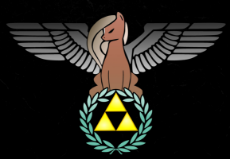
Some more edits.
>>79869
no the problem in japan is they let ẃomen have careers and jobs, and for that matter any rights
no the problem in japan is they let ẃomen have careers and jobs, and for that matter any rights
So if I wanted to do a drawing to honor her for yule should I draw her or my waifu?
I've been thinking about something. This thread is slow but related so I will drop it here. I have noticed that the Left Hand Path in the occult is not dissimilar to the Left in politics and the same for the Right.
https://en.wikipedia.org/wiki/Left-hand_path_and_right-hand_path
Spirit I see as a term for "a force that exists that I cannot see". The collective politics of a group of people in a society does lead to social pressure to conform. This is what I see as a wave. But religion might call this the influence of the devil or some other form of demonic influence.
So what if ideological conflict of a society is exactly the same as spiritual conflict as seen by religion. Religion of the past has just anthropomorphized the cycles. This then explains why they can then predict the inevitable fall of societies.
This also means that our politics makes the "gods" which is the collective multi-brain "personality". So as we make Epona, we should make her wholesome.
https://en.wikipedia.org/wiki/Left-hand_path_and_right-hand_path
Spirit I see as a term for "a force that exists that I cannot see". The collective politics of a group of people in a society does lead to social pressure to conform. This is what I see as a wave. But religion might call this the influence of the devil or some other form of demonic influence.
So what if ideological conflict of a society is exactly the same as spiritual conflict as seen by religion. Religion of the past has just anthropomorphized the cycles. This then explains why they can then predict the inevitable fall of societies.
This also means that our politics makes the "gods" which is the collective multi-brain "personality". So as we make Epona, we should make her wholesome.
>>80549
The problem with what you're asking is that we aren't creating her, at least consciously. We've simply noticed her emergence and are trying to determine why she is emerging and how to stregthen her. While it's true our memes are stregthening her the fact is she is still an old goddess with her own agenda.
The problem with what you're asking is that we aren't creating her, at least consciously. We've simply noticed her emergence and are trying to determine why she is emerging and how to stregthen her. While it's true our memes are stregthening her the fact is she is still an old goddess with her own agenda.
>>80549
>So what if ideological conflict of a society is exactly the same as spiritual conflict as seen by religion. Religion of the past has just anthropomorphized the cycles. This then explains why they can then predict the inevitable fall of societies.
I like this idea and want to look further into it.
>>80560
>>80562
>why she's emerging
It's a long-term play to help mankind remember its roots.
Horses as a form of transportation were made obsolete the moment cars became affordable, so that alone probably wrecked most of Epona's influence in the world. People don't use horses for much where I live except the occasional riding show, and to keep them as pets - they're not really viewed as helpers or friends of humans the way they were in the old days. Epona's domain wasn't concerned with pets, but rather companions, and to watch over the animals and their humans as they hunted, rode, farmed, and fought together.
Then along comes a TV show, a hundred years after horses no longer have a respectable place in society and more than three hundred years after people started taking an interest in the old gods again. It's about magical, friendly, pastel equines, who live in a utopic society. They work, eat, laugh, and play together as they go about making a good world even better for its inhabitants. The show is so popular among men that one commonly shared thought is to imagine these ponies as friends, even lovers, since the modern woman pales in comparison.
>Epona is a nurturer, a protector, and she herself is said to be the result of a coupling between a man and a mare.
Really makes me think.
The point: if meme magic can have a tangible effect in our world, if it can resurrect dead gods and produce new ones - then what we've seen in the last two years was a long time coming, and there's no reason to assume it should stop now. Also, if MLP G4 doesn't have something to do with the old goddess Epona, I would be surprised. Even if she didn't set it into motion, she would almost certainly try to keep the wheel turning, if nothing else. but if this turns into open worship again, could we leave out the animal sacrifices this time around, yer grace?
>So what if ideological conflict of a society is exactly the same as spiritual conflict as seen by religion. Religion of the past has just anthropomorphized the cycles. This then explains why they can then predict the inevitable fall of societies.
I like this idea and want to look further into it.
>>80560
>>80562
>why she's emerging
It's a long-term play to help mankind remember its roots.
Horses as a form of transportation were made obsolete the moment cars became affordable, so that alone probably wrecked most of Epona's influence in the world. People don't use horses for much where I live except the occasional riding show, and to keep them as pets - they're not really viewed as helpers or friends of humans the way they were in the old days. Epona's domain wasn't concerned with pets, but rather companions, and to watch over the animals and their humans as they hunted, rode, farmed, and fought together.
Then along comes a TV show, a hundred years after horses no longer have a respectable place in society and more than three hundred years after people started taking an interest in the old gods again. It's about magical, friendly, pastel equines, who live in a utopic society. They work, eat, laugh, and play together as they go about making a good world even better for its inhabitants. The show is so popular among men that one commonly shared thought is to imagine these ponies as friends, even lovers, since the modern woman pales in comparison.
>Epona is a nurturer, a protector, and she herself is said to be the result of a coupling between a man and a mare.
Really makes me think.
The point: if meme magic can have a tangible effect in our world, if it can resurrect dead gods and produce new ones - then what we've seen in the last two years was a long time coming, and there's no reason to assume it should stop now. Also, if MLP G4 doesn't have something to do with the old goddess Epona, I would be surprised. Even if she didn't set it into motion, she would almost certainly try to keep the wheel turning, if nothing else. but if this turns into open worship again, could we leave out the animal sacrifices this time around, yer grace?
>>80549
The left-hand, right-hand path is subjective & tailored to societal mindsets. I would even propose that it is cyclical, transktioning as vaues change. One example comes to mind, the Third Reich. Around war time and to this day the National Socialists are viewed as "left-handed"; the denominations being the absolute evil, an occult symbol (ex. Charles Manson), and dark "magic", or science to clarify. Going outside, the paradigm, I would harken to Nietzsche's master-slave morality; to sum it up bluntly, it is dichotomy between the two societal states being one of merit, nobility, grandeur and the other being meek coddling, slave-like. Conside that the 20th Century saw a "revolt of slave morality" as the resentful outnumbered the noble. My point being that there's many ways to this divide, yet the conclusions remain similar, if not pararllel. I would argue we are actually on the left path (to lump both of us together) due to how we ar villfied. "Degenerate, basementdweller, ponyfag, politically incorrect, etc..." However, when society changes in a different favour, they will become left and we will become right. "Might makes right" literally.
In the implication of the creation of Epona,I would say that there's in fact a duality. Creation of perception and the results of circumstance. In a way we interpret Epona's energy. Within our searchwe find a solution. Epona, just as her values, has always been. We are only seeing a revival in belief. Many other cultures have adopted the goddess under different names, yet she remains all the same. However, one thing we do create is our interpretation. Which is based on our communal values. If she turns out rotten, we may just be as rotten.
But, enough of the hard talk. How is Epona helping you? Does she ease your stress? After all, she represents the hope and prosperity of the greatest value of life, the creation thereof.
>>80534
Your waifu is sufficient enough. She's a companion. By the way, her feast day is during the Autumn Equinox on December 18th.
>>80607
I do love imagery of cycles.
Though fickle Fortune has deceived me,
She pormis'd fair and perform'd but ill;
Of mistress, friends, and wealth bereav'd me,
Yet I bear a heart shall support me still.
I'll act with prudence as far 's I'm able,
But if success I must never find,
Then come misfortune, I bid thee welcome,
I'll meet thee with an undaunted mind.
-Robert Burns
Another thing I might add is that we have seen the old gods arise as our current ones have failed us in a sense. Now, people worship magical deities, Ebola-chan one of them.
Some notes: There's an island in Michigan called Mackinac Island where upon motor cars are banned, and every year they celebrate Epona. Also, Epon's flower is the ros, so somehow my Roseluck posting has been relevant without me knowing it (she isn't even my waifu.)
The left-hand, right-hand path is subjective & tailored to societal mindsets. I would even propose that it is cyclical, transktioning as vaues change. One example comes to mind, the Third Reich. Around war time and to this day the National Socialists are viewed as "left-handed"; the denominations being the absolute evil, an occult symbol (ex. Charles Manson), and dark "magic", or science to clarify. Going outside, the paradigm, I would harken to Nietzsche's master-slave morality; to sum it up bluntly, it is dichotomy between the two societal states being one of merit, nobility, grandeur and the other being meek coddling, slave-like. Conside that the 20th Century saw a "revolt of slave morality" as the resentful outnumbered the noble. My point being that there's many ways to this divide, yet the conclusions remain similar, if not pararllel. I would argue we are actually on the left path (to lump both of us together) due to how we ar villfied. "Degenerate, basementdweller, ponyfag, politically incorrect, etc..." However, when society changes in a different favour, they will become left and we will become right. "Might makes right" literally.
In the implication of the creation of Epona,I would say that there's in fact a duality. Creation of perception and the results of circumstance. In a way we interpret Epona's energy. Within our searchwe find a solution. Epona, just as her values, has always been. We are only seeing a revival in belief. Many other cultures have adopted the goddess under different names, yet she remains all the same. However, one thing we do create is our interpretation. Which is based on our communal values. If she turns out rotten, we may just be as rotten.
But, enough of the hard talk. How is Epona helping you? Does she ease your stress? After all, she represents the hope and prosperity of the greatest value of life, the creation thereof.
>>80534
Your waifu is sufficient enough. She's a companion. By the way, her feast day is during the Autumn Equinox on December 18th.
>>80607
I do love imagery of cycles.
Though fickle Fortune has deceived me,
She pormis'd fair and perform'd but ill;
Of mistress, friends, and wealth bereav'd me,
Yet I bear a heart shall support me still.
I'll act with prudence as far 's I'm able,
But if success I must never find,
Then come misfortune, I bid thee welcome,
I'll meet thee with an undaunted mind.
-Robert Burns
Another thing I might add is that we have seen the old gods arise as our current ones have failed us in a sense. Now, people worship magical deities, Ebola-chan one of them.
Some notes: There's an island in Michigan called Mackinac Island where upon motor cars are banned, and every year they celebrate Epona. Also, Epon's flower is the ros, so somehow my Roseluck posting has been relevant without me knowing it (she isn't even my waifu.)
>>80642
>Autumn Equinox on December 18th.
you know the equinox was on September 22nd right? The date you posted is right around winter Solstice which would line her feast up with Yule.
>Autumn Equinox on December 18th.
you know the equinox was on September 22nd right? The date you posted is right around winter Solstice which would line her feast up with Yule.
>>80688
>Epona's feast day in the Roman calendar was given as December 18 on a rustic calendar from Guidizzolo, Italy,[12] although this may have been only a local celebration.
https://en.wikipedia.org/wiki/Epona
The origins of her come from Celtic who don't have written records, so past a certain point in time it is speculation.
>Epona's feast day in the Roman calendar was given as December 18 on a rustic calendar from Guidizzolo, Italy,[12] although this may have been only a local celebration.
https://en.wikipedia.org/wiki/Epona
The origins of her come from Celtic who don't have written records, so past a certain point in time it is speculation.
>Unlike so many of the Triple Mothers, Epona's name was not associated in inscriptions with a particular territory. This may have been partly due to the fact that she “traveled with” the cavalry units that were the main source of these inscriptions.[391] But the Mothers' connection with specific territories was also symbolized in Romano-Celtic artwork. They were almost invariably shown seated: a position that suggested being “situated” or “abiding”, as though emphasizing their identification with a particular “land-place”. In marked contrast with this however, Epona's inherent mobility was - by definition - far from “abiding” in just one place. Regardless of whether she was shown astride, aside or between her horses, her “seat” suggested that she encompassed an indefinitely wider territory than was usual among the Mothers. But, although she could roam freely across the land, she was no less an “Earth-Mother”. In a strong sense her universality connected her all the more closely with the primordial Mother of the Celts' Neolithic ancestors, and she was certainly always “grounded” and locally accessible. There can be no doubt, for example, that her presence was keenly felt at local shrines like the ones at Allerey or Luxeuil.
>Another very significant difference between Epona and other Celtic Mothers was that her sovereignty was directly alluded to in virtually all her imagery, and was explicitly expressed in inscriptional epithets that referred to her as “Queen”. The only other Celtic goddesses for whom sovereignty was such a prominent theme were those in Irish myth. But even then, the reference was usually in the context of a sacred marriage to a specific king or god.[392] Divine couples were a common theme in Romano-Celtic art and, in some cases, their attributes suggested the Mother's sovereignty.[393] But, while Epona had liaisons with a number of gods and one or two goddesses (Chapter Five), she was never any god's consort or “wife” and her sovereignty was never left to guess-work.
>A third important way in which Epona differed most markedly from other Celtic mother-goddesses was her profound sexuality and its extraordinary unveiling in Romano-Celtic art (Chapter Two). It might be argued that this aspect of the Lady was quite separate from her identity as a Mother, and there is a very strong sense in which this was true - both in the fresco from Pompeii where she appears semi-nude with Isis (Chapters Six), and in the Allerey-relief shown again here.[394] At Allerey however, the presence of the mare and foal was an unambiguous reference to motherhood. Epona's presence in this context suggests the “Maiden” or nymph-like Celtic Mother - though her semi-nudity goes far beyond the bounds of the youthful Mothers' veiled sexuality.
>NYMPH-LIKE MAIDEN
>The modern observation that Epona “appears like a nymph” at Allerey is highly significant.[395] No doubt the artist who carved the relief intended the comparison. Not only did it mirror the mural of Aphrodite in Pompeii (Chapter Two), but the same reclining posture and semi-nudity were used in the portrayal of a fertility goddess in Britain (she was also worshipped in north-west Spain and in southern Gaul).[396] The physical similarity was strikingly obvious in the stone relief pictured below.[397] More pointedly however, an inscription also referred specifically to this goddess as “the Nymph Coventina”.[398] The fact that both Epona and Coventina were associated with springs that welled up out of the ground also supported the identification of both goddesses as “nymphs” - the association of nymphs with water was well-known from classical (Graeco-Roman) mythology.[399]
...
>In Epona's case, her association with healing was particularly strong in connection with water and she was worshipped at a number of healing-spring shrines in Gaul.[417] The most exceptional examples were the healing hot springs at Allerey and Saulon-la-Chapelle in Burgundy - at both of which she appeared nude (or semi-nude) like a nymph.[418]
...
>We have already seen that Epona was an exceptional mother-goddess. In Gaul, at least, this was no less true of her association with war. At Rom (Deux-Sevres) in western France, for instance, she was explicitly referred to as Catona: “battle goddess”.[464] But she was not a “war goddess” per se. Unlike the Morrigan in Irish mythology or the Greek goddess Enyo, for example, we never see Epona inciting violence or lashing her warriors into battle-frenzy with a bloody scourge. On the contrary, her imagery is filled with symbols of peace, prosperity and gentle nurturing kindness. Epona's association with battle was a particularly significant reminder of war as a source of abundance, and that the pain and hardship of life - and of war - could not be separated from the moral, social and material bounty of battle. Even her scourge conveyed calm authority, discipline and mastery: it represented both the ordeal and the ideal of the Celtic warrior's training and life.
>Unlike any other Celtic goddess, whether of fertility or of fruitfulness, Epona held a unique place at the centre of Celtic culture and daily life. As Horse Goddess, she was intimately invested in the life and death, the ethos and the cosmology of its warrior-elite. Outwardly, her domain stretched from the sun above to the underworld below the wide green earth on which she and the warrior roamed together, proud and free. Inwardly, it lay firmly in the warrior's heart. Quite apart from the long physical and moral discipline of training from childhood, or the glory that could be won on the battlefield, the warrior's relationship with Epona was immediate and personal: cultivated on a daily basis in caring for and riding a horse. Whether in times of peace or riding into battle, we can imagine she was never far from the warrior's mind - and she would be there as both guide and companion on the final ride to the underworld in death.
>Another very significant difference between Epona and other Celtic Mothers was that her sovereignty was directly alluded to in virtually all her imagery, and was explicitly expressed in inscriptional epithets that referred to her as “Queen”. The only other Celtic goddesses for whom sovereignty was such a prominent theme were those in Irish myth. But even then, the reference was usually in the context of a sacred marriage to a specific king or god.[392] Divine couples were a common theme in Romano-Celtic art and, in some cases, their attributes suggested the Mother's sovereignty.[393] But, while Epona had liaisons with a number of gods and one or two goddesses (Chapter Five), she was never any god's consort or “wife” and her sovereignty was never left to guess-work.
>A third important way in which Epona differed most markedly from other Celtic mother-goddesses was her profound sexuality and its extraordinary unveiling in Romano-Celtic art (Chapter Two). It might be argued that this aspect of the Lady was quite separate from her identity as a Mother, and there is a very strong sense in which this was true - both in the fresco from Pompeii where she appears semi-nude with Isis (Chapters Six), and in the Allerey-relief shown again here.[394] At Allerey however, the presence of the mare and foal was an unambiguous reference to motherhood. Epona's presence in this context suggests the “Maiden” or nymph-like Celtic Mother - though her semi-nudity goes far beyond the bounds of the youthful Mothers' veiled sexuality.
>NYMPH-LIKE MAIDEN
>The modern observation that Epona “appears like a nymph” at Allerey is highly significant.[395] No doubt the artist who carved the relief intended the comparison. Not only did it mirror the mural of Aphrodite in Pompeii (Chapter Two), but the same reclining posture and semi-nudity were used in the portrayal of a fertility goddess in Britain (she was also worshipped in north-west Spain and in southern Gaul).[396] The physical similarity was strikingly obvious in the stone relief pictured below.[397] More pointedly however, an inscription also referred specifically to this goddess as “the Nymph Coventina”.[398] The fact that both Epona and Coventina were associated with springs that welled up out of the ground also supported the identification of both goddesses as “nymphs” - the association of nymphs with water was well-known from classical (Graeco-Roman) mythology.[399]
...
>In Epona's case, her association with healing was particularly strong in connection with water and she was worshipped at a number of healing-spring shrines in Gaul.[417] The most exceptional examples were the healing hot springs at Allerey and Saulon-la-Chapelle in Burgundy - at both of which she appeared nude (or semi-nude) like a nymph.[418]
...
>We have already seen that Epona was an exceptional mother-goddess. In Gaul, at least, this was no less true of her association with war. At Rom (Deux-Sevres) in western France, for instance, she was explicitly referred to as Catona: “battle goddess”.[464] But she was not a “war goddess” per se. Unlike the Morrigan in Irish mythology or the Greek goddess Enyo, for example, we never see Epona inciting violence or lashing her warriors into battle-frenzy with a bloody scourge. On the contrary, her imagery is filled with symbols of peace, prosperity and gentle nurturing kindness. Epona's association with battle was a particularly significant reminder of war as a source of abundance, and that the pain and hardship of life - and of war - could not be separated from the moral, social and material bounty of battle. Even her scourge conveyed calm authority, discipline and mastery: it represented both the ordeal and the ideal of the Celtic warrior's training and life.
>Unlike any other Celtic goddess, whether of fertility or of fruitfulness, Epona held a unique place at the centre of Celtic culture and daily life. As Horse Goddess, she was intimately invested in the life and death, the ethos and the cosmology of its warrior-elite. Outwardly, her domain stretched from the sun above to the underworld below the wide green earth on which she and the warrior roamed together, proud and free. Inwardly, it lay firmly in the warrior's heart. Quite apart from the long physical and moral discipline of training from childhood, or the glory that could be won on the battlefield, the warrior's relationship with Epona was immediate and personal: cultivated on a daily basis in caring for and riding a horse. Whether in times of peace or riding into battle, we can imagine she was never far from the warrior's mind - and she would be there as both guide and companion on the final ride to the underworld in death.
1507392458_4.png (184.9 KB, 802x493, 1423241__safe_artist-colon-stardrawsponies_blue background_blushing_clothes_costume_curled up_cute_earth pony_epona_female_kigurumi_looking at you_mare.png)

Epona and Sgt. Reckless look a lot alike. Is this just a coincidence?
>>81373
Yes but these are both have white fetlocks and a white stripe on their muzzle. And are both very brave and heroic horses.
Just speculating to see if anyone has any interesting ideas or theories.
Yes but these are both have white fetlocks and a white stripe on their muzzle. And are both very brave and heroic horses.
Just speculating to see if anyone has any interesting ideas or theories.
>>81375
That Reckless pic is inaccurate, fyi. She actually doesn't have a sock on her right hoof.
I thought they were similar the moment I saw them too though.
That Reckless pic is inaccurate, fyi. She actually doesn't have a sock on her right hoof.
I thought they were similar the moment I saw them too though.
>>81376
Ah damn, had to go looking for more pics of her to understand what you were talking about.
Oh well, I dont think we even have an image of what kind of horse the goddess would be represented by. I would assume that it would vary by region.
Regardless they both feel very similar to me(zelda epona and reckless). Maybe its just nostalgia combined with my love of Reckless' story.
Ah damn, had to go looking for more pics of her to understand what you were talking about.
Oh well, I dont think we even have an image of what kind of horse the goddess would be represented by. I would assume that it would vary by region.
Regardless they both feel very similar to me(zelda epona and reckless). Maybe its just nostalgia combined with my love of Reckless' story.
>>81379
Amen to that.
So can we now say that the Holy Trinity of mlpol would be Elway the Father, Epona the Holy Spirit, and Reckless the son(daughter).
Amen to that.
So can we now say that the Holy Trinity of mlpol would be Elway the Father, Epona the Holy Spirit, and Reckless the son(daughter).
1507506329_1.jpg (63.1 KB, 684x589, 7022f0347868170c3c9ee976152694d8--drawing-ideas-austria.jpg)

>>81405
>Aryanne is more close to a Lipizaner, which is an Austrian breed.
YES! I've been shilling this since the first month after the Memeschluss.
In contrast, I feel like Leslie Fair would be a Russian/Mongolian Prezwalski: the last breed of wild hoers.
>Aryanne is more close to a Lipizaner, which is an Austrian breed.
YES! I've been shilling this since the first month after the Memeschluss.
In contrast, I feel like Leslie Fair would be a Russian/Mongolian Prezwalski: the last breed of wild hoers.
>>83169
You're welcome, Vrilanon. And, know this. There's much more Epona worshippers out there. I converted a bit of them, or at least got them to associate.
You're welcome, Vrilanon. And, know this. There's much more Epona worshippers out there. I converted a bit of them, or at least got them to associate.
1508410870.png (105.0 KB, 500x549, your-dick-cant-tell-the-difference-so-why-all-the-1697200.png)
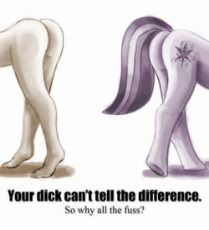
for casual Epona worship turn your wife around on all fours and plough. Your dick can't tell the difference anyway.
>>83170
You can get a good triforce logo from wiki
https://en.wikipedia.org/wiki/Triforce#/media/File:Triforce.svg
You can get a good triforce logo from wiki
https://en.wikipedia.org/wiki/Triforce#/media/File:Triforce.svg
So I'm planning on making a shrine to Epona in my new appartment. I'm going touse some iconography of my waifu in it but what else do you guys recommend.
The Inguz rune is really worth a look.
[YouTube] The runes: Continuity of life; Ing, Ingwaz, Inguz ( Elder Futhark )![]()
http://runemeaning.com/inguz/
The Book of Rune Secrets says:
KEY CONCEPTS: replication, creation, conscious generation, inner-child, the core pattern + algorithms (eg. DNA), wholeness, symmetry, planned bursts, isolation, incubation, gestation
“… Inguz represents a simple but complex idea — that of the seed… that part of life which implicitly copies, varies and selects in order to produce, in the most simple way possible, infinite and awesome complexity…”
“… Inguz, or “ing”, is in our language today. We use ‘ing’ when we speak of ‘doing’, as in ‘sitting’ or ‘running’ or ‘thinking’, which are active processes, not objects. In our language we are object-centric. We focus on the noun. Adopting the secrets of Inguz allows us to become process-centric, so that we may see the world and Life as verbs…”
“… Harnessing the energy of Inguz for our purposes requires that we become conscious of the ways in which a small seed ca be planted in the right environment, or nurtured, into a powerful new mode of being…”
[YouTube] The runes: Continuity of life; Ing, Ingwaz, Inguz ( Elder Futhark )
http://runemeaning.com/inguz/
The Book of Rune Secrets says:
KEY CONCEPTS: replication, creation, conscious generation, inner-child, the core pattern + algorithms (eg. DNA), wholeness, symmetry, planned bursts, isolation, incubation, gestation
“… Inguz represents a simple but complex idea — that of the seed… that part of life which implicitly copies, varies and selects in order to produce, in the most simple way possible, infinite and awesome complexity…”
“… Inguz, or “ing”, is in our language today. We use ‘ing’ when we speak of ‘doing’, as in ‘sitting’ or ‘running’ or ‘thinking’, which are active processes, not objects. In our language we are object-centric. We focus on the noun. Adopting the secrets of Inguz allows us to become process-centric, so that we may see the world and Life as verbs…”
“… Harnessing the energy of Inguz for our purposes requires that we become conscious of the ways in which a small seed ca be planted in the right environment, or nurtured, into a powerful new mode of being…”
1508992713_3.png (305.6 KB, 900x1075, 9980c8f267d9e560776ef1d4cca52c80.png)

1508992713_4.png (199.3 KB, 800x662, 13516 - applejack crossover legend_of_zelda Link.png)
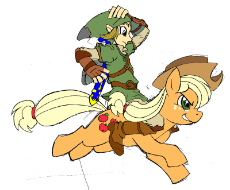
>Epona was born somewhere between 50-52 bce during the Iron Age. Her father, not liking women, took a mare to mate and she bore a beautiful white filly. Epona being born half mare and half human was named by her mother thus giving Epona the ability to shape shift from horse to human. By naming her Epona it showed she descended from a Horse Goddess. During the Iron Age war was the purpose and passion of all. Iron was used not only for weapons and tools but houses were made from bronze. Gauls being nomads valued the horse highly for their uses in travels, during battles and having horses signified wealth and power.
---
Quote:
BROKEN
DISCOURAGED,DEJECTED AND ALONE,
HUSBAND HAD LEFT ME FOR ANOTHER.
I LAY THERE IN BED
THINKING OF GOOD TIMES, BAD TIMES,
MONEY WOES, HEALTH PROBLEMS.
LAST THOUGHT OF THE NIGHT
WHAT DO I DO NOW?
I FELL ASLEEP OR SO I THOUGHT,
THE SOUND OF HOOFS AWOKE ME.
SURELY I WAS DREAMING,
FOR THERE STOOD A GREAT WHITE HORSE.
WITH A SOFT NEIGH,
SHE BOWED HER HEAD
AND WITH A GENTLE NUDGE
HER WARM BREATH CARESSED ME.
UPON THIS HORSE SAT A BEAUTIFUL LADY
WITH LONG DARK TRESSES,
BARREN OF SHIRT,
GLORIOUS BREASTS
UNADORNED AND LOVELY.
SHE REACHED OUT TAKING ME
GENTLY BY THE HAND
LIFTING ME BEHIND HER
AS IF I WEIGHED NO MORE THAN A FEATHER.
THROUGHOUT THE NIGHT
WE DID JOURNEY
ACROSS THE DARKEN SKYS
LED BY STARS SO BRIGHT
LIT BY THE MOON'S FULL LIGHT.
SHE IMPARTED THE KNOWLEDGE
OF THE WHEEL OF LIFE,
CYCLES AND CIRCLES,
POWER OF THE FIVE ELEMENTS,
MAIDEN,MOTHER AND CRONE.
ALL I HAVE TO DO IS ASK SHE SAID.
TO ALL HER DAUGHTERS
EVERYTHING SHALL BE GIVEN.
IN RETURN FOR ALL HER GIFTS,
A THANK YOU
WAS ALL SHE WANTED.
WITH TREMBLING BODY AND POUNDING HEART
I KNEW WHO SHE WAS.
WHILE DREAMING I MUST
HAVE CALLED OUT HER NAME.
WITH ALL HER WISDOM AND POWERS,
UNTO ME SHE CAME.
NO LONGER BROKEN,
DISCOURAGED, DEJECTED, ALONE,
WORRIES NO MORE.
SHE HAD TAKEN THEM AWAY.
ALL I HAD TO DO WAS ASK,
DAUGHTER OF EPONA I AM,
AND THROUGH HER
GODDESS WITHIN.
GODDESS EPONA, MY GODDESS
WITH LOVE AND DEVOTION,
HEART,SOUL AND MIND
I DEDICATE MYSELF TO YOU.
AWAKENING IN THE MORNING LIGHT,
SUN STREAMING THROUGH THE WINDOWS,
HEART SANK WITH SADNESS.
IT WAS JUST A DREAM AFTER ALL.
ARISING FROM THE BED,
I STOOD THERE IN A DAZE
WITH A SMILE UPON MY FACE
FOR EMBEDDED IN THE RUG
WERE FOUR PERFECT HOOF PRINTS.
http://archive.fo/X34qw (doesn't archive the pics)
http://www.orderwhitemoon.org/goddess/epona-mother/index.html
Epona is white. It's okay to be white.
---
Quote:
BROKEN
DISCOURAGED,DEJECTED AND ALONE,
HUSBAND HAD LEFT ME FOR ANOTHER.
I LAY THERE IN BED
THINKING OF GOOD TIMES, BAD TIMES,
MONEY WOES, HEALTH PROBLEMS.
LAST THOUGHT OF THE NIGHT
WHAT DO I DO NOW?
I FELL ASLEEP OR SO I THOUGHT,
THE SOUND OF HOOFS AWOKE ME.
SURELY I WAS DREAMING,
FOR THERE STOOD A GREAT WHITE HORSE.
WITH A SOFT NEIGH,
SHE BOWED HER HEAD
AND WITH A GENTLE NUDGE
HER WARM BREATH CARESSED ME.
UPON THIS HORSE SAT A BEAUTIFUL LADY
WITH LONG DARK TRESSES,
BARREN OF SHIRT,
GLORIOUS BREASTS
UNADORNED AND LOVELY.
SHE REACHED OUT TAKING ME
GENTLY BY THE HAND
LIFTING ME BEHIND HER
AS IF I WEIGHED NO MORE THAN A FEATHER.
THROUGHOUT THE NIGHT
WE DID JOURNEY
ACROSS THE DARKEN SKYS
LED BY STARS SO BRIGHT
LIT BY THE MOON'S FULL LIGHT.
SHE IMPARTED THE KNOWLEDGE
OF THE WHEEL OF LIFE,
CYCLES AND CIRCLES,
POWER OF THE FIVE ELEMENTS,
MAIDEN,MOTHER AND CRONE.
ALL I HAVE TO DO IS ASK SHE SAID.
TO ALL HER DAUGHTERS
EVERYTHING SHALL BE GIVEN.
IN RETURN FOR ALL HER GIFTS,
A THANK YOU
WAS ALL SHE WANTED.
WITH TREMBLING BODY AND POUNDING HEART
I KNEW WHO SHE WAS.
WHILE DREAMING I MUST
HAVE CALLED OUT HER NAME.
WITH ALL HER WISDOM AND POWERS,
UNTO ME SHE CAME.
NO LONGER BROKEN,
DISCOURAGED, DEJECTED, ALONE,
WORRIES NO MORE.
SHE HAD TAKEN THEM AWAY.
ALL I HAD TO DO WAS ASK,
DAUGHTER OF EPONA I AM,
AND THROUGH HER
GODDESS WITHIN.
GODDESS EPONA, MY GODDESS
WITH LOVE AND DEVOTION,
HEART,SOUL AND MIND
I DEDICATE MYSELF TO YOU.
AWAKENING IN THE MORNING LIGHT,
SUN STREAMING THROUGH THE WINDOWS,
HEART SANK WITH SADNESS.
IT WAS JUST A DREAM AFTER ALL.
ARISING FROM THE BED,
I STOOD THERE IN A DAZE
WITH A SMILE UPON MY FACE
FOR EMBEDDED IN THE RUG
WERE FOUR PERFECT HOOF PRINTS.
http://archive.fo/X34qw (doesn't archive the pics)
http://www.orderwhitemoon.org/goddess/epona-mother/index.html
Epona is white. It's okay to be white.
>>84177
I fucking love it when ancient mythologies correlate perfectly with my memes. This is even more on the nose than when 4chan discovered that the ancient Egyptians performed memetic magic by repeatedly writing magical symbols, and that Kek caused happenings by getting dubs.
I fucking love it when ancient mythologies correlate perfectly with my memes. This is even more on the nose than when 4chan discovered that the ancient Egyptians performed memetic magic by repeatedly writing magical symbols, and that Kek caused happenings by getting dubs.
1509075379.jpg (164.2 KB, 1024x772, pagan_wheel_of_the_year_by_estruda-d2o95jb.jpg)
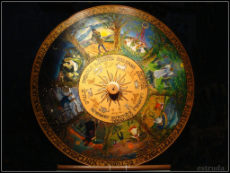
Pictured: wheel of the year/seasons
The following is a mishmash of several sources about the cyclic nature of paganism in world, then a video on the religious reincarnation in paganism.
http://www.isle-of-avalon.com/pagan.htm
https://paganfed.org/index.php/paganism/pf-wheel-of-the-year
Pagans revere the cycles of Nature through rituals or ceremonies of various kinds. Pagans of the western traditions celebrate up to eight festivals or Sabbats each year (not all Pagans celebrate all of them). They comprise the four solar quarters i.e. the two solstices (longest and shortest days) and the two equinoxes (day and night are the same length) plus four Celtic 'fire' festivals. All these mark important events in the cycle of life and also symbolise changes in the Goddess and God. They are:
Samhain - 31st October (pronounced Sow-in):
The Wheel of the Year is seen to begin at Samhain, which is also known as Hallowe'en or All Hallows Eve. This is the Celtic New Year, when the veil between the worlds of life and death stands open. Samhain is a festival of the dead, when Pagans remember those who have gone before and acknowledge the mystery of death. As Pagans we celebrate death as a part of life.
Yule - 21st December (archaic form Geola, pronounced Yula):
Yule is the time of the winter solstice, when the sun child is reborn, an image of the return of all new life born through the love of the Gods. The Norse had a God Ullr, and within the Northern Tradition Yule is regarded as the New Year.
Imbolc - 2nd February:
Imbolc, also called Oimelc and Candlemas, celebrates the awakening of the land and the growing power of the Sun. Often, the Goddess is venerated in her aspect as the Virgin of Light and her altar is decked with snowdrops, the heralds of spring.
Spring Equinox - 21st March:
Now night and day stand equal. The Sun grows in power and the land begins to bloom. By Spring Equinox, the powers of the gathering year are equal to the darkness of winter and death. For many Pagans, the youthful God with his hunting call leads the way in dance and celebration. Others dedicate this time to Eostre the Anglo- Saxon Goddess of fertility.
Beltane - 30th April:
The powers of light and new life now dance and move through all creation. The Wheel continues to turn. Spring gives way to Summer's first full bloom and Pagans celebrate Beltane with maypole dances, symbolizing the mystery of the Sacred Marriage of Goddess and God.
Midsummer - 21st June:
At summer solstice is the festival of Midsummer, sometimes called Litha. The God in his light aspect is at the height of his power and is crowned Lord of Light. It is a time of plenty and celebration.
Lughnasadh - 1st August (pronounced Loo-nassa):
Lughnasadh, otherwise called Lammas, is the time of the corn harvest, when Pagans reap those things they have sown; when they celebrate the fruits of the mystery of Nature. At Lughnasadh, Pagans give thanks for the bounty of the Goddess as Queen of the Land.
Autumn Equinox - 21 September:
Day and night stand hand in hand as equals. As the shadows lengthen, Pagans see the darker faces of the God and Goddess. For many Pagans, this rite honours old age and the approach of Winter.
Samhain - 31st October:
The Wheel turns and returns to Samhain, the festival of the dead, when we face the Gods in their most awesome forms. This is not a time of fear, but a time to understand more deeply that life and death are part of a sacred whole.
This wheel is sometimes called the Gardnerian Wheel because it is a combination of two ancient wheels (acknowledgements to Kenny Klein). The hunting wheel, the oldest, has two God births: The Oak King is born at midsummer and rules through to Yule when he dies and the Holly King is born. The agricultural wheel has the young God born at Ostara, symbolic of the sun/son rising in the East. He dies in the second harvest, Mabon.
>Christian linearity and Pagan Cyclism
Here Augustine pontificates on the differences between religious views on history. Note; he attempts to debunk Pagan cyclicism:
>All these words depict history as a continuous process as distinct from the cyclical view prevalent at that time. Karl Lowith, a distinguished theologian of history, acknowledges the Christian view of history as the innovation against the classical cyclism. It is only the breakthrough by the Christian view of history that makes possible the necessary condition for a philosophy of history.28 Ancient people influenced by the eternal rotation of the natural world tend to understand the world as a cycle of life and death. History is likewise a cycle of ascent and decline, of progress and regress. Man is caught in this vicious cycle and is at the mercy of the course of history. It is Augustine who boldly refutes this cyclical view of history in De Civitate Dei:
"But what wonder if these men run in their circular error, and find no way forth, seeing they neither know mankind's origin nor his end, being not able to pierce into God's depths, who being eternal, and without beginning, yet gave time a beginning, and made man in time whom He had not made before, yet not now makes He him by any sudden motion, but as He had eternally decreed?" Therefore the concept of creation completely negates the idea of recurrence and the eternity of the world. This world has a definite beginning and end that is destined by God. Augustine goes on to caricature those men as Psalms 12:8 describes, "the wicked walk in a circuit". The roots of this linear conception of history can be traced back to the Old Testament prophets who strongly emphasis the sovereignty of Yahweh over the history of mankind. But it was Augustine who first elaborated this concept fully and produced a theology of history worthy of this name. Thus Augustine determined the whole course of development of the philosophy of history throughout the Middle Ages and continued to exert his influence down to the present day.
The following is a mishmash of several sources about the cyclic nature of paganism in world, then a video on the religious reincarnation in paganism.
http://www.isle-of-avalon.com/pagan.htm
https://paganfed.org/index.php/paganism/pf-wheel-of-the-year
Pagans revere the cycles of Nature through rituals or ceremonies of various kinds. Pagans of the western traditions celebrate up to eight festivals or Sabbats each year (not all Pagans celebrate all of them). They comprise the four solar quarters i.e. the two solstices (longest and shortest days) and the two equinoxes (day and night are the same length) plus four Celtic 'fire' festivals. All these mark important events in the cycle of life and also symbolise changes in the Goddess and God. They are:
Samhain - 31st October (pronounced Sow-in):
The Wheel of the Year is seen to begin at Samhain, which is also known as Hallowe'en or All Hallows Eve. This is the Celtic New Year, when the veil between the worlds of life and death stands open. Samhain is a festival of the dead, when Pagans remember those who have gone before and acknowledge the mystery of death. As Pagans we celebrate death as a part of life.
Yule - 21st December (archaic form Geola, pronounced Yula):
Yule is the time of the winter solstice, when the sun child is reborn, an image of the return of all new life born through the love of the Gods. The Norse had a God Ullr, and within the Northern Tradition Yule is regarded as the New Year.
Imbolc - 2nd February:
Imbolc, also called Oimelc and Candlemas, celebrates the awakening of the land and the growing power of the Sun. Often, the Goddess is venerated in her aspect as the Virgin of Light and her altar is decked with snowdrops, the heralds of spring.
Spring Equinox - 21st March:
Now night and day stand equal. The Sun grows in power and the land begins to bloom. By Spring Equinox, the powers of the gathering year are equal to the darkness of winter and death. For many Pagans, the youthful God with his hunting call leads the way in dance and celebration. Others dedicate this time to Eostre the Anglo- Saxon Goddess of fertility.
Beltane - 30th April:
The powers of light and new life now dance and move through all creation. The Wheel continues to turn. Spring gives way to Summer's first full bloom and Pagans celebrate Beltane with maypole dances, symbolizing the mystery of the Sacred Marriage of Goddess and God.
Midsummer - 21st June:
At summer solstice is the festival of Midsummer, sometimes called Litha. The God in his light aspect is at the height of his power and is crowned Lord of Light. It is a time of plenty and celebration.
Lughnasadh - 1st August (pronounced Loo-nassa):
Lughnasadh, otherwise called Lammas, is the time of the corn harvest, when Pagans reap those things they have sown; when they celebrate the fruits of the mystery of Nature. At Lughnasadh, Pagans give thanks for the bounty of the Goddess as Queen of the Land.
Autumn Equinox - 21 September:
Day and night stand hand in hand as equals. As the shadows lengthen, Pagans see the darker faces of the God and Goddess. For many Pagans, this rite honours old age and the approach of Winter.
Samhain - 31st October:
The Wheel turns and returns to Samhain, the festival of the dead, when we face the Gods in their most awesome forms. This is not a time of fear, but a time to understand more deeply that life and death are part of a sacred whole.
This wheel is sometimes called the Gardnerian Wheel because it is a combination of two ancient wheels (acknowledgements to Kenny Klein). The hunting wheel, the oldest, has two God births: The Oak King is born at midsummer and rules through to Yule when he dies and the Holly King is born. The agricultural wheel has the young God born at Ostara, symbolic of the sun/son rising in the East. He dies in the second harvest, Mabon.
>Christian linearity and Pagan Cyclism
Here Augustine pontificates on the differences between religious views on history. Note; he attempts to debunk Pagan cyclicism:
>All these words depict history as a continuous process as distinct from the cyclical view prevalent at that time. Karl Lowith, a distinguished theologian of history, acknowledges the Christian view of history as the innovation against the classical cyclism. It is only the breakthrough by the Christian view of history that makes possible the necessary condition for a philosophy of history.28 Ancient people influenced by the eternal rotation of the natural world tend to understand the world as a cycle of life and death. History is likewise a cycle of ascent and decline, of progress and regress. Man is caught in this vicious cycle and is at the mercy of the course of history. It is Augustine who boldly refutes this cyclical view of history in De Civitate Dei:
"But what wonder if these men run in their circular error, and find no way forth, seeing they neither know mankind's origin nor his end, being not able to pierce into God's depths, who being eternal, and without beginning, yet gave time a beginning, and made man in time whom He had not made before, yet not now makes He him by any sudden motion, but as He had eternally decreed?" Therefore the concept of creation completely negates the idea of recurrence and the eternity of the world. This world has a definite beginning and end that is destined by God. Augustine goes on to caricature those men as Psalms 12:8 describes, "the wicked walk in a circuit". The roots of this linear conception of history can be traced back to the Old Testament prophets who strongly emphasis the sovereignty of Yahweh over the history of mankind. But it was Augustine who first elaborated this concept fully and produced a theology of history worthy of this name. Thus Augustine determined the whole course of development of the philosophy of history throughout the Middle Ages and continued to exert his influence down to the present day.
The Augustine comparison was also taken from this paper:
Revelation and Love: An Introduction to Augustine's Theology of
History in de Civitate Dei
Dr. Stephen T. Chan
Seattle University
(Written 1987, Revised 1997)
Revelation and Love: An Introduction to Augustine's Theology of
History in de Civitate Dei
Dr. Stephen T. Chan
Seattle University
(Written 1987, Revised 1997)
>>84245
It is fair to say that a large part of reality is cycles. What we don't know is if any components are linear. For example the technology wave seems to just keep going up. The limitation would be humans ability to control the technology so that it does not send us extinct or back to the stone age. If that happens technology is a wave/cycle also. Its boundaries defined by the limitations of humanity to contain it.
At this stage there is human progress but with periods of regression. So it looks like both are in play for now. Some scientists suggest that the universe does not completely begin from a single point, but might cycle between contraction and expansion. There is also the possibility that far advanced technology might unravel spacetime fabric.
I think that ultimately any system of energy has a boundary, if so then that boundary causes reflection or change in direction, given sufficient time a repeat will occur.
Your post shows where the West became linear in its thinking and this could even lead to the idea of continual progress and therefore progressives. Seeing the cycle appear would be incomprehensible to the linearist progressives and would seem to be antiquated. They would also then have to assume this cycle is a premeditated attack due to the assumption that linear progress is the only Natural state.
If cycles are the Natural state, then a linear West would experience increasing psychological and real tensions until Nature (who never gives up) wins. Nature does not care how destructive its rebalancing is, because Nature has no self-consciousness.
As for god, I consider it to be a label for a seemingly intelligent unknown force, much like spirit is the same thing but more localised. I suspect the unknown seemingly intelligent God is the aggregate result of the actions of a community time delayed into the future. eg. no babies now = economic peak detrimental impact 35 years later. This is "judgement" from "God".
A return to a focus on a fertility goddess is an easy fit for what the future needs (given the current debt/interest based economic system).
---
Since Epona is a shape shifter I propose that she has 3 known forms to us. White female with dark brown hair, white horse with dark brown mane, brown pony with light mane and white patch above nose. This allows us to bring all the representations into one being, who wishes a return to fertility and abundance that we sorely need.
It is fair to say that a large part of reality is cycles. What we don't know is if any components are linear. For example the technology wave seems to just keep going up. The limitation would be humans ability to control the technology so that it does not send us extinct or back to the stone age. If that happens technology is a wave/cycle also. Its boundaries defined by the limitations of humanity to contain it.
At this stage there is human progress but with periods of regression. So it looks like both are in play for now. Some scientists suggest that the universe does not completely begin from a single point, but might cycle between contraction and expansion. There is also the possibility that far advanced technology might unravel spacetime fabric.
I think that ultimately any system of energy has a boundary, if so then that boundary causes reflection or change in direction, given sufficient time a repeat will occur.
Your post shows where the West became linear in its thinking and this could even lead to the idea of continual progress and therefore progressives. Seeing the cycle appear would be incomprehensible to the linearist progressives and would seem to be antiquated. They would also then have to assume this cycle is a premeditated attack due to the assumption that linear progress is the only Natural state.
If cycles are the Natural state, then a linear West would experience increasing psychological and real tensions until Nature (who never gives up) wins. Nature does not care how destructive its rebalancing is, because Nature has no self-consciousness.
As for god, I consider it to be a label for a seemingly intelligent unknown force, much like spirit is the same thing but more localised. I suspect the unknown seemingly intelligent God is the aggregate result of the actions of a community time delayed into the future. eg. no babies now = economic peak detrimental impact 35 years later. This is "judgement" from "God".
A return to a focus on a fertility goddess is an easy fit for what the future needs (given the current debt/interest based economic system).
---
Since Epona is a shape shifter I propose that she has 3 known forms to us. White female with dark brown hair, white horse with dark brown mane, brown pony with light mane and white patch above nose. This allows us to bring all the representations into one being, who wishes a return to fertility and abundance that we sorely need.
Shape-shifting:
>The perception of Epona as a goddess of horses however, was only the outermost layer of her nature. At a deeper level, her identity was blended with and expressed through the horse itself. This was implicit in the second, more mysterious and magical sense of the term “Horse Goddess”. In this sense, Epona was “so closely identifiable with [the horse] that her persona cannot be separated from that of the creature itself.”[257] This does not mean that the Celts worshipped horses, or believed that animals were deities per se. Rather, they held a profoundly pantheistic or animistic belief in the divine or magical “aliveness” of the natural world: animals embodied divine qualities in the same way the Mother Goddess was immanent in the land.
>Epona's identification in essence with the horse was a perfect example. Understood in this sense, “Horse Goddess” expresses both the nature and the behaviour of horses - not just individually or as a domesticated friend to “man”, but collectively and in the wild. In fact, it was the universality of “the herd” that gave Epona some of her most fundamental qualities. As mare-and-foal, for example, she would certainly have represented - pars pro toto - the entire herd: all horses everywhere.[259]
>More specifically, the leader of a wild herd is usually an older mare who establishes and maintains her dominant role through attitudes that let the other horses know she expects to be obeyed - despite her smaller size and strength.[260] She not only leads the herd, but also determines the route taken when they move to a new location.[261] This provides the context and foundation for the Horse Goddess' special form of sovereignty and leadership. As we shall see, the sexual dominance of mares also plays a crucially important role in Epona's story. Unlike the Celts' perceptions of the “Lady of the Horse”, which seem to have been more related to domesticated horses, the idea of the “Divine Mare” was apparently rooted in their close observation of and experience with wild horses.
>It is possible that Epona's essential identification with the horse was an example of “shape-shifting”. This was a common theme among the Celts, particularly in Irish mythology,[262] and there are several images that suggest shape-shifting in the earlier archaeological record.[263] But if the Gauls believed Epona was able to shift from horse to human form, that belief probably came later in her story. The coin images of naked female riders imply that they may have had at least a mental picture of Epona in human form by the 3rd century BC.
Birth:
>The most frequently cited early-modern source for Epona's myth was a book called Magia Naturalis (“Natural Magic”), published in Naples (Italy) by Giambattista Della Porta in 1589. The English translation, made about eighty years later, contained the following lines:
>“The same author (Thales) in his ‘Parallels’, reports out of Agesilaos, his third book of Italian matters, that Fulvius Stella loathing the company of a woman, coupled himself with a Mare, of whom he begot a very beautiful maiden-child, and she was called by a fit name, Epona.”
Source: Epona: Hidden Goddess of the Celts - P D MacKenzie Cook (2016)
It is disputed that the Celtic version would be the same birth story, but we just don't know. Therefore the de facto birth story is this. We also have a name now for the human father.
Pics: https://de.wikipedia.org/wiki/Epona_%28Mythologie%29
>The perception of Epona as a goddess of horses however, was only the outermost layer of her nature. At a deeper level, her identity was blended with and expressed through the horse itself. This was implicit in the second, more mysterious and magical sense of the term “Horse Goddess”. In this sense, Epona was “so closely identifiable with [the horse] that her persona cannot be separated from that of the creature itself.”[257] This does not mean that the Celts worshipped horses, or believed that animals were deities per se. Rather, they held a profoundly pantheistic or animistic belief in the divine or magical “aliveness” of the natural world: animals embodied divine qualities in the same way the Mother Goddess was immanent in the land.
>Epona's identification in essence with the horse was a perfect example. Understood in this sense, “Horse Goddess” expresses both the nature and the behaviour of horses - not just individually or as a domesticated friend to “man”, but collectively and in the wild. In fact, it was the universality of “the herd” that gave Epona some of her most fundamental qualities. As mare-and-foal, for example, she would certainly have represented - pars pro toto - the entire herd: all horses everywhere.[259]
>More specifically, the leader of a wild herd is usually an older mare who establishes and maintains her dominant role through attitudes that let the other horses know she expects to be obeyed - despite her smaller size and strength.[260] She not only leads the herd, but also determines the route taken when they move to a new location.[261] This provides the context and foundation for the Horse Goddess' special form of sovereignty and leadership. As we shall see, the sexual dominance of mares also plays a crucially important role in Epona's story. Unlike the Celts' perceptions of the “Lady of the Horse”, which seem to have been more related to domesticated horses, the idea of the “Divine Mare” was apparently rooted in their close observation of and experience with wild horses.
>It is possible that Epona's essential identification with the horse was an example of “shape-shifting”. This was a common theme among the Celts, particularly in Irish mythology,[262] and there are several images that suggest shape-shifting in the earlier archaeological record.[263] But if the Gauls believed Epona was able to shift from horse to human form, that belief probably came later in her story. The coin images of naked female riders imply that they may have had at least a mental picture of Epona in human form by the 3rd century BC.
Birth:
>The most frequently cited early-modern source for Epona's myth was a book called Magia Naturalis (“Natural Magic”), published in Naples (Italy) by Giambattista Della Porta in 1589. The English translation, made about eighty years later, contained the following lines:
>“The same author (Thales) in his ‘Parallels’, reports out of Agesilaos, his third book of Italian matters, that Fulvius Stella loathing the company of a woman, coupled himself with a Mare, of whom he begot a very beautiful maiden-child, and she was called by a fit name, Epona.”
Source: Epona: Hidden Goddess of the Celts - P D MacKenzie Cook (2016)
It is disputed that the Celtic version would be the same birth story, but we just don't know. Therefore the de facto birth story is this. We also have a name now for the human father.
Pics: https://de.wikipedia.org/wiki/Epona_%28Mythologie%29
>>84270
>What we don't know is if any components are linear.
I wanted to actually interject that both pagans and Augustine would be wrong in this case, however I would provide that pagans were more metaphysical in their thinking. Although perhaps the Christians too. Theology is the matter of philosophies veiled. Greeks and Romans innovated despite having a cyclical paradigm. So, I never quite understood when people said paganism was "too traditional". Their systems of beliefs after all were never set to apply to one time period or the next, but eternal as man and nature are cyclical.
As for god, I believe you are describing pantheism as a pantheon, the extension of a force of all as figures. I, just as you, follow this view. Paganism is mnemonics in order to remember the wisdom of the old, In this, getting in touch with fertility is apart of the old way of the cycle. To turn the wheel as to speak.
>What we don't know is if any components are linear.
I wanted to actually interject that both pagans and Augustine would be wrong in this case, however I would provide that pagans were more metaphysical in their thinking. Although perhaps the Christians too. Theology is the matter of philosophies veiled. Greeks and Romans innovated despite having a cyclical paradigm. So, I never quite understood when people said paganism was "too traditional". Their systems of beliefs after all were never set to apply to one time period or the next, but eternal as man and nature are cyclical.
As for god, I believe you are describing pantheism as a pantheon, the extension of a force of all as figures. I, just as you, follow this view. Paganism is mnemonics in order to remember the wisdom of the old, In this, getting in touch with fertility is apart of the old way of the cycle. To turn the wheel as to speak.
>>84279
We are both thinking the same. It leads to some interesting concepts, such as voting in a democracy in a periodic fashion is like praying to the meta-physical deity for fortune in the future. The deity even is logically meta-physical because the intent is to affect a future point in time, it is a mental force applied in the time dimension. The state of the current social->political->economic situation determines the future for decades to come. Memes then, especially now in the chans, are the encoded storage and retrieval of information as you attribute to mnemonics, and are probably the same word. Add in cycles, and legends of Jesus or Arthur or other mighty figures, returning as the re-emergence of alike figures. In mnemonics terms these figure literally return, but in political/memetic terms a likeness returns. This means we can select from all the old gods one which perfectly matches our position in these great rotations because we have been in this position before.
The myths and MLP are playing the same role and derive from the same place. The need to encode important facts about life in a simple rememberable format and inspire us to act on those facts.
We are both thinking the same. It leads to some interesting concepts, such as voting in a democracy in a periodic fashion is like praying to the meta-physical deity for fortune in the future. The deity even is logically meta-physical because the intent is to affect a future point in time, it is a mental force applied in the time dimension. The state of the current social->political->economic situation determines the future for decades to come. Memes then, especially now in the chans, are the encoded storage and retrieval of information as you attribute to mnemonics, and are probably the same word. Add in cycles, and legends of Jesus or Arthur or other mighty figures, returning as the re-emergence of alike figures. In mnemonics terms these figure literally return, but in political/memetic terms a likeness returns. This means we can select from all the old gods one which perfectly matches our position in these great rotations because we have been in this position before.
The myths and MLP are playing the same role and derive from the same place. The need to encode important facts about life in a simple rememberable format and inspire us to act on those facts.
>>84281
>We are both thinking the same.
Aye! Then I pledge allegiance to you as my superior! I am now devoted to your word.
>We are both thinking the same.
Aye! Then I pledge allegiance to you as my superior! I am now devoted to your word.
1509095872_2.jpg (18.5 KB, 261x350, epona_da_by_tixielix-d8os6oz.jpg)
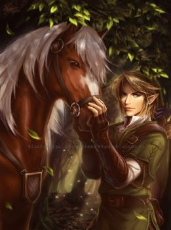
I was pondering that since Epona has a Celtic origin and spreads into Europe that perhaps the West has a predisposition to horses. This predisposition might then be a partial reason for the popularity of Faust's version of MLP. So I went off to http://herdcensus.com/2014%20STATE%20OF%20THE%20HERD%20REPORT.pdf to see how strong the white race was in the herd census. It was almost absolute! (pic)
From this I could speculate that the white race has been in need of a mythological and cultural revival to help it address its concerns.
Epona and MLP is possibly the same underlying urge.
Then I decided to look into the domestication of horses history:
>A study in 2012 that performed genomic sampling on 300 work horses from local areas as well as a review of previous studies of archaeology, mitochondrial DNA, and Y-DNA suggested that horses were originally domesticated in the western part of the Eurasian steppe.
https://en.wikipedia.org/wiki/History_of_horse_domestication_theories
>western part of the Eurasian steppe
https://en.wikipedia.org/wiki/Eurasian_Steppe
>However, an increasing amount of evidence supports the hypothesis that horses were domesticated in the Eurasian Steppes approximately 3500 BCE; recent discoveries in the context of the Botai culture suggest that Botai settlements in the Akmola Province of Kazakhstan are the location of the earliest domestication of the horse.
https://en.wikipedia.org/wiki/Domestication_of_the_horse
So the spread of domestic horses into Europe has given Europeans an innate appreciation for them, including association with a goddess, which doesn't seem quite the same intensity in the East. I found no Eastern horse goddesses in my quick look. I did find this: https://en.wikipedia.org/wiki/White_horse_(mythology) which mentions white horses in other cultures.
>The term Horse goddess may refer to one of several mythological goddesses:
>
> Epona, the horse goddess in Celtic and Gallo-Roman mythology
> Rhiannon, the horse goddess in Welsh mythology
> Étaín, identified as a horse goddess in some versions of Irish Mythology
> Gontia (deity), a Celtic goddess
https://en.wikipedia.org/wiki/Horse_goddess . There is no equivalent Horse_gods.
And here we are.
Praise Epona, may her bounty fall upon us, and keep MLP on air. Is Applejack, Epona?
From this I could speculate that the white race has been in need of a mythological and cultural revival to help it address its concerns.
Epona and MLP is possibly the same underlying urge.
Then I decided to look into the domestication of horses history:
>A study in 2012 that performed genomic sampling on 300 work horses from local areas as well as a review of previous studies of archaeology, mitochondrial DNA, and Y-DNA suggested that horses were originally domesticated in the western part of the Eurasian steppe.
https://en.wikipedia.org/wiki/History_of_horse_domestication_theories
>western part of the Eurasian steppe
https://en.wikipedia.org/wiki/Eurasian_Steppe
>However, an increasing amount of evidence supports the hypothesis that horses were domesticated in the Eurasian Steppes approximately 3500 BCE; recent discoveries in the context of the Botai culture suggest that Botai settlements in the Akmola Province of Kazakhstan are the location of the earliest domestication of the horse.
https://en.wikipedia.org/wiki/Domestication_of_the_horse
So the spread of domestic horses into Europe has given Europeans an innate appreciation for them, including association with a goddess, which doesn't seem quite the same intensity in the East. I found no Eastern horse goddesses in my quick look. I did find this: https://en.wikipedia.org/wiki/White_horse_(mythology) which mentions white horses in other cultures.
>The term Horse goddess may refer to one of several mythological goddesses:
>
> Epona, the horse goddess in Celtic and Gallo-Roman mythology
> Rhiannon, the horse goddess in Welsh mythology
> Étaín, identified as a horse goddess in some versions of Irish Mythology
> Gontia (deity), a Celtic goddess
https://en.wikipedia.org/wiki/Horse_goddess . There is no equivalent Horse_gods.
And here we are.
Praise Epona, may her bounty fall upon us, and keep MLP on air. Is Applejack, Epona?
>>84284
Just no. Ego is how to fail. I respectfully reject this. Keep me on my toes by double checking things instead, and be an equal.
Just no. Ego is how to fail. I respectfully reject this. Keep me on my toes by double checking things instead, and be an equal.
>>84285
>Kazakhstan are the location of the earliest domestication of the horse.
Great Success! Horse Vagina is national treasure of Khazakstan to crush egg of the jew!
>Kazakhstan are the location of the earliest domestication of the horse.
Great Success! Horse Vagina is national treasure of Khazakstan to crush egg of the jew!
1509331814.png (197.7 KB, 900x1188, mlp_epona_by_aeroflyte-d4gq2on.png)
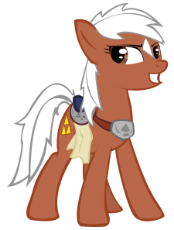
Alright so I've been reflecting on some gets that Epona was giving to posting in another thread supporting peace that I saw a while back. While at first people seemed to be interpreting them as some sort of support of pacifism I couldn't help but think that didn't match up with a goddess that was a patron goddess of Roman Calvary. So thinking on it I think she has actually been trying to tell us to not focus so much on making war with our enemies to fight them but instead do what Europeans do and fight our enemies by building something greater than they can handle. This appears to be what Epona's new goal is and when thinking about her approach I realized that she is the opposing compliment to Kek's methods of warfare. Kek was about sowing chaos in our enemies so they become disorganized and allow us to fight them.
This ultimately lead me to stumble upon something that has been talked about with Kek before but now with a goddess that seems like she wants to rebuild has some more context to it. Kek has been described as the bringer of light, which if you see him as clearing a path for us to rebuild, EPONA BECOMES THE LIGHT THAT IS HERE TO HELP US REBUILD.
It appears to me that Kek being the lovable shitposter he is chose a goddess to help Rebuild Europe into Equestria.
This ultimately lead me to stumble upon something that has been talked about with Kek before but now with a goddess that seems like she wants to rebuild has some more context to it. Kek has been described as the bringer of light, which if you see him as clearing a path for us to rebuild, EPONA BECOMES THE LIGHT THAT IS HERE TO HELP US REBUILD.
It appears to me that Kek being the lovable shitposter he is chose a goddess to help Rebuild Europe into Equestria.
>>84685
If there's any common theme in modern Paganism, it is the rebuilding of the old. Judging by why worship Epona. Then, it can be assumed that by your pretense, we are building up our population in order to face a great trial.
If there's any common theme in modern Paganism, it is the rebuilding of the old. Judging by why worship Epona. Then, it can be assumed that by your pretense, we are building up our population in order to face a great trial.
1509338117.jpg (617.0 KB, 1600x2083, epona_by_joshcalloway-d6buk0m.jpg)
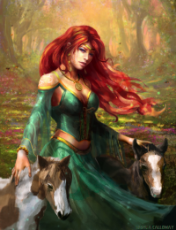
>>84685
>After Winter comes Spring.
Abundance and babies.
It makes sense to rebuild after destroying the broken. If we view everything as a season then perhaps economically Winter is coming, or is here, and Spring is after that. The economic bust forces people to have children as a safety net for old age, since money has failed to ensure that. The Winter of economic brings the Spring of babies. The Summer then is when the babies enter the workforce/economy meaningfully. This boom the creates the Autumn of decay (decadence/few babies) which leads to Winter again.
It is appropriate for us to think about making Spring happen to end the Winter.
Also the Romans did a lot to civilise the world, and their success lead to despotism. A trap we keep falling into. We need to stop making success = selfishness = society failure.
Praise Epona. Bring the bounty, so Winter ends.
>After Winter comes Spring.
Abundance and babies.
It makes sense to rebuild after destroying the broken. If we view everything as a season then perhaps economically Winter is coming, or is here, and Spring is after that. The economic bust forces people to have children as a safety net for old age, since money has failed to ensure that. The Winter of economic brings the Spring of babies. The Summer then is when the babies enter the workforce/economy meaningfully. This boom the creates the Autumn of decay (decadence/few babies) which leads to Winter again.
It is appropriate for us to think about making Spring happen to end the Winter.
Also the Romans did a lot to civilise the world, and their success lead to despotism. A trap we keep falling into. We need to stop making success = selfishness = society failure.
Praise Epona. Bring the bounty, so Winter ends.
The Mane 6 are apart of an ever evolving cycle of an order of six individuals each representing a similar virtue to the last order.
>>84690
surprising how much this imaganing of godess Epona looks like the farmer girl that kept her horse variant in the zelda game. I always liked her better than the princess.
surprising how much this imaganing of godess Epona looks like the farmer girl that kept her horse variant in the zelda game. I always liked her better than the princess.
>>84691
If the tree of harmony is any sort of indicator pic related might hint at where they might go with it, considering Twi's cutie mark/element crystal
If the tree of harmony is any sort of indicator pic related might hint at where they might go with it, considering Twi's cutie mark/element crystal
>>84754
I was hoping someone would look deeper. This wasn't always a Jew thing (although it kind-of still was...).
I was hoping someone would look deeper. This wasn't always a Jew thing (although it kind-of still was...).
1509426028.jpg (62.8 KB, 500x564, tumblr_mc8gkijdzz1r233opo1_500.jpg)
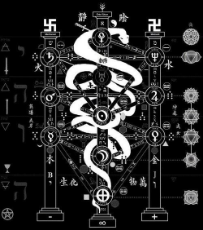
>>84758
https://en.m.wikipedia.org/wiki/Moloch
>Moloch (Phoenician: , Masoretic מֹלֶךְ mōlek, Greek Μολόχ) is the biblical name of a Canaanite god associated with child sacrifice.
Are the ponies being led astray by the tree of harmony? Can it be proposed that we are we fighting the Semitic influence on My Little Pony (Molech) by worshipping Epona in counter?
https://en.m.wikipedia.org/wiki/Moloch
>Moloch (Phoenician: , Masoretic מֹלֶךְ mōlek, Greek Μολόχ) is the biblical name of a Canaanite god associated with child sacrifice.
Are the ponies being led astray by the tree of harmony? Can it be proposed that we are we fighting the Semitic influence on My Little Pony (Molech) by worshipping Epona in counter?
home of the jew
Praise Epona.
can we nail down the tenets and principals of epona worship? we need to learn from the failings of the worship of KEK during the election, imo it was too vague and open to interpretation which allowed the skeptics and redditors (the kekistanis as it were) to hijack the concept from us.
>>85068
Epona is mobile and not fixed to a location. She is of the land and its bounty. She is Western and and can't be localised lower down than that.
She is about renewal and plenty. She is sexual because it makes babies which makes the bounty of life. She is a Queen Goddess, not a ordinary Goddess, so she is above the standard Mother Goddess. She rules everything, not subdomains.
There is no corresponding King God, she is not constrained but is all about the giving of natural abundance. She is a battle Goddess but not a War Goddess, her core isn't violent. "Her imagery is filled with symbols of peace, prosperity and gentle nurturing kindness." So she knows there is a time to fight but is not looking for fights, she looks for continuations.
A horse can help man in many ways, both in peace and war, but it isn't the methods that she is about, but whatever process continues you and yours into the future, and makes that future assured. She has no interest in things that stifle or oppress natural continuation.
She does not accept sacrifices, she likes flowers, especially roses and rose petals. So nothing about death, and everything about life's richness.
Epona is interested in whatever leads to assured continuance.
In my humble view.
Epona is mobile and not fixed to a location. She is of the land and its bounty. She is Western and and can't be localised lower down than that.
She is about renewal and plenty. She is sexual because it makes babies which makes the bounty of life. She is a Queen Goddess, not a ordinary Goddess, so she is above the standard Mother Goddess. She rules everything, not subdomains.
There is no corresponding King God, she is not constrained but is all about the giving of natural abundance. She is a battle Goddess but not a War Goddess, her core isn't violent. "Her imagery is filled with symbols of peace, prosperity and gentle nurturing kindness." So she knows there is a time to fight but is not looking for fights, she looks for continuations.
A horse can help man in many ways, both in peace and war, but it isn't the methods that she is about, but whatever process continues you and yours into the future, and makes that future assured. She has no interest in things that stifle or oppress natural continuation.
She does not accept sacrifices, she likes flowers, especially roses and rose petals. So nothing about death, and everything about life's richness.
Epona is interested in whatever leads to assured continuance.
In my humble view.
1510937641.jpg (84.1 KB, 476x640, tumblr_l0wbdb0qQA1qbz35lo1_500.jpg)
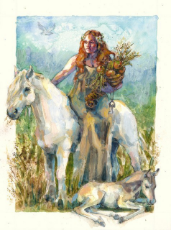
>A white horse in an endless field of golden grain
What could possibly be more beautiful?
What could possibly be more beautiful?
1510938234.png (198.0 KB, 1280x1280, tumblr_inline_oz6f332kn91runpb9_1280.png)

>>84691
Perhaps we should make the Elements Epona's cutie mark? From what we know, she would definitely fit in with what they represent.
Perhaps we should make the Elements Epona's cutie mark? From what we know, she would definitely fit in with what they represent.
1510944787.jpg (192.4 KB, 1024x1406, epona___celtic_goddess_protector_of_horses_by_jedipencil-d7ccr8j.jpg)
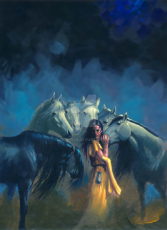
>>89032
There is a distinct worship in Epona, but I can't but help think it is open to more. I've heard others question other aspects & tie others into it like Kek for example. And, what do you know, I find out that frogs are a symbol for fertility. I remember someone said that kek was the lightbringer, and Epona was the light. I believe there's a connection with the flood of the Nile which is a natural cycle. There's definitely more. I'll detail it later when I have more thought and study put into it. But, I admit, I like the name Eponism. I suggested Ponism because regionality among Pagan religions. Paganism is but an umbrella term, individual religions were named by the people who practiced them. The Hellenic religion was called Hellenic and the Celtic religion called Celtic. These beliefs were fundamentally tied to their people. I supose Eponish is good. There is nothing more purer than a union between a man and a mare, thus Epona is the deity of this. A purer being.
There is a distinct worship in Epona, but I can't but help think it is open to more. I've heard others question other aspects & tie others into it like Kek for example. And, what do you know, I find out that frogs are a symbol for fertility. I remember someone said that kek was the lightbringer, and Epona was the light. I believe there's a connection with the flood of the Nile which is a natural cycle. There's definitely more. I'll detail it later when I have more thought and study put into it. But, I admit, I like the name Eponism. I suggested Ponism because regionality among Pagan religions. Paganism is but an umbrella term, individual religions were named by the people who practiced them. The Hellenic religion was called Hellenic and the Celtic religion called Celtic. These beliefs were fundamentally tied to their people. I supose Eponish is good. There is nothing more purer than a union between a man and a mare, thus Epona is the deity of this. A purer being.
Poni=Pony
Were=Man
Man+Pony=Epona
Eponism
Were=Man
Man+Pony=Epona
Eponism
Praise Epona. Everyday I dedicate myself to the glory of pone. Lithe and pretty, strong and handsome, sexual but not vulgar; bringers of life; lovers, angels, gods. Able to arouse such passion. Pone is love, pone is life. Ave Poner.
>>89069
> individual religions were named by the people who practiced them
tricky because "horse fucker" and /mlpol/ aren't exactly conducive to such naming conventions, perhaps anon or anonymous could work and it could be an Anonic religion?
> individual religions were named by the people who practiced them
tricky because "horse fucker" and /mlpol/ aren't exactly conducive to such naming conventions, perhaps anon or anonymous could work and it could be an Anonic religion?
>>89080
I wonder if we can find other examples of Anonic Pagan Religion outside of Kek and Epona, the internet is relatively new and it's history can be fleeting but it'd be interesting to see anonymous worship of deities online occuring elsewhere. One of the failures of modern major religions imo is they're too tired to prophets and such, there's obviously any number of specific examples of more serious problems but I mean in regard to religion in general, for example Jesus who's legacy has been twisted, Mohammed who's a pedaphilic warlord, Solomon and Moses who are nebulous and vague and probably didn't exist, most cults revolve around a single person too, but with Anonism everyone is a prophet and a believer and only things such as the random chance of post numbers as well as how well claims hold up to other anons perception of the deity can hold any water making the system of belief open and flexible
I wonder if we can find other examples of Anonic Pagan Religion outside of Kek and Epona, the internet is relatively new and it's history can be fleeting but it'd be interesting to see anonymous worship of deities online occuring elsewhere. One of the failures of modern major religions imo is they're too tired to prophets and such, there's obviously any number of specific examples of more serious problems but I mean in regard to religion in general, for example Jesus who's legacy has been twisted, Mohammed who's a pedaphilic warlord, Solomon and Moses who are nebulous and vague and probably didn't exist, most cults revolve around a single person too, but with Anonism everyone is a prophet and a believer and only things such as the random chance of post numbers as well as how well claims hold up to other anons perception of the deity can hold any water making the system of belief open and flexible
>>89085
Anonism sounds like another umbrella term that can suit anything like Ebola-chan for instance. In my defence, I will include Eponism under Anonism, however Eponism will separate in the regard to Epona's mythos.
Anonism sounds like another umbrella term that can suit anything like Ebola-chan for instance. In my defence, I will include Eponism under Anonism, however Eponism will separate in the regard to Epona's mythos.
>>89085
Another aspect of the old religions is the printing press made the texts inflexible, and therefore seem outdated. Times move on, language moves on. The internet and Anonism makes a flexible text whilst keeping the inner message. It can evolve (or perhaps revolve) so that it brings the central message but in the form that fits well with the current society's memes/culture. Keeping it always relevant.
Also if we see them as concepts or self-made magic we avoid the "is it real or not" problem. It's as real as we make it.
Will the internet gods fight each other??
Another aspect of the old religions is the printing press made the texts inflexible, and therefore seem outdated. Times move on, language moves on. The internet and Anonism makes a flexible text whilst keeping the inner message. It can evolve (or perhaps revolve) so that it brings the central message but in the form that fits well with the current society's memes/culture. Keeping it always relevant.
Also if we see them as concepts or self-made magic we avoid the "is it real or not" problem. It's as real as we make it.
Will the internet gods fight each other??
>>89131
The flexibility is rather important, being the driving reason tradition was carried vocally rather than written. Why, because the role of the paternal and maternal importance in the passage of beliefs as the family as a whole. Even this importance is furthered by a sort of worship or celebration of the parents, like the Cult of the Matronae. Paganism is, as I said before, the mnemonics of remembering wisdom.
The flexibility is rather important, being the driving reason tradition was carried vocally rather than written. Why, because the role of the paternal and maternal importance in the passage of beliefs as the family as a whole. Even this importance is furthered by a sort of worship or celebration of the parents, like the Cult of the Matronae. Paganism is, as I said before, the mnemonics of remembering wisdom.
>>89131
>Will the internet gods fight each other??
well so far they have no real reason too all three anonic deities I'm aware of (kek, ebola, epona) have been aligned pro-white. The left can't meme for shit so I'm not sure they can compete here
>Will the internet gods fight each other??
well so far they have no real reason too all three anonic deities I'm aware of (kek, ebola, epona) have been aligned pro-white. The left can't meme for shit so I'm not sure they can compete here
1511245481.png (283.1 KB, 1024x768, tumblr_static_triforce_2_by_5995260108.png)

>>89585
This is easily in conjunction with classifications of the gods in simple terms:
Kek-Chaotic good
Ebola-Chaotic good
Epona-Lawful good
With this, we can all discern that are perfectly are on our side all together as well create a triumvirate of good in parallel to the Hindu triumvirate of Creation, Preservation, and Destruction.
www.bbc.co.uk/religion/religions/hinduism/deities/shiva.shtml
>Shiva is the third god in the Hindu triumvirate. The triumvirate consists of three gods who are responsible for the creation, upkeep and destruction of the world. The other two gods are Brahma and Vishnu.
>Brahma is the creator of the universe while Vishnu is the preserver of it. Shiva's role is to destroy the universe in order to re-create it.
>Hindus believe his powers of destruction and recreation are used even now to destroy the illusions and imperfections of this world, paving the way for beneficial change. According to Hindu belief, this destruction is not arbitrary, but constructive. Shiva is therefore seen as the source of both good and evil and is regarded as the one who combines many contradictory elements.
In accord, Kek, as the "light bringer", is the creator while the destroyer. Epona is the upkeep of this order, or the "preserver", she maintains the values of fertility that keep a healthy cycle in place. All the while rallying us to a prosperous path. Kek also assumes two roles, whereas Ebola-chan only one. She is a clear force of destruction, appearing as a force of evil to some, but actually is a constructive purging imperfections to bring in a new order. Which is why Africans are compelled to believe she is a curse against them, and some of us believe that she purely harms Africans (which she likely does to a degree.) I call this paradigm the triforce paradigm, which is reminiscent of the triforce and represents the triumvirate of gods likewise reflecting another aspect of the Triumvirate of the Soul (Greek) and the Three Marks of Reality (Buddha.) 3 is a holy number. And, the holy can fight evil which I would concern as Moloch. A Canaanite god of child sacrifice and corrupter. Referencing to the Equestrian Kabala, the Mane Six are under an evil source of power not present before (maybe.) Moloch may control the mane six while we with the gods battle to free them. Perhaps if we do succeed, the ride can be over.
This is easily in conjunction with classifications of the gods in simple terms:
Kek-Chaotic good
Ebola-Chaotic good
Epona-Lawful good
With this, we can all discern that are perfectly are on our side all together as well create a triumvirate of good in parallel to the Hindu triumvirate of Creation, Preservation, and Destruction.
www.bbc.co.uk/religion/religions/hinduism/deities/shiva.shtml
>Shiva is the third god in the Hindu triumvirate. The triumvirate consists of three gods who are responsible for the creation, upkeep and destruction of the world. The other two gods are Brahma and Vishnu.
>Brahma is the creator of the universe while Vishnu is the preserver of it. Shiva's role is to destroy the universe in order to re-create it.
>Hindus believe his powers of destruction and recreation are used even now to destroy the illusions and imperfections of this world, paving the way for beneficial change. According to Hindu belief, this destruction is not arbitrary, but constructive. Shiva is therefore seen as the source of both good and evil and is regarded as the one who combines many contradictory elements.
In accord, Kek, as the "light bringer", is the creator while the destroyer. Epona is the upkeep of this order, or the "preserver", she maintains the values of fertility that keep a healthy cycle in place. All the while rallying us to a prosperous path. Kek also assumes two roles, whereas Ebola-chan only one. She is a clear force of destruction, appearing as a force of evil to some, but actually is a constructive purging imperfections to bring in a new order. Which is why Africans are compelled to believe she is a curse against them, and some of us believe that she purely harms Africans (which she likely does to a degree.) I call this paradigm the triforce paradigm, which is reminiscent of the triforce and represents the triumvirate of gods likewise reflecting another aspect of the Triumvirate of the Soul (Greek) and the Three Marks of Reality (Buddha.) 3 is a holy number. And, the holy can fight evil which I would concern as Moloch. A Canaanite god of child sacrifice and corrupter. Referencing to the Equestrian Kabala, the Mane Six are under an evil source of power not present before (maybe.) Moloch may control the mane six while we with the gods battle to free them. Perhaps if we do succeed, the ride can be over.
A reflection on the three virtues of reincarnation:
"Well, take the typical undestanding of reincarnation, then fully detail the principles. In Indo-European origin, there was a shared undestanding in this wisdom shown by the Three Marks of Existence in Buddha and The Tripartite of The Soul. My basic undestanding of it being the self, family, and hierarchy. This is in a hierarchial structure in itself with the family and self being the lower (self being the lowest), and what can be described as the supreme order being the highest quality. The soul is indestructible, and will pass into another vessel. Carrying onto the latter two qualities the most whereas the self being lost the most. Pay no fear though, as the learning of the family and high order will bring closer the knowledge of the past self to the current self. In this way, man is only whole with a balance of the tripartite."
"Well, take the typical undestanding of reincarnation, then fully detail the principles. In Indo-European origin, there was a shared undestanding in this wisdom shown by the Three Marks of Existence in Buddha and The Tripartite of The Soul. My basic undestanding of it being the self, family, and hierarchy. This is in a hierarchial structure in itself with the family and self being the lower (self being the lowest), and what can be described as the supreme order being the highest quality. The soul is indestructible, and will pass into another vessel. Carrying onto the latter two qualities the most whereas the self being lost the most. Pay no fear though, as the learning of the family and high order will bring closer the knowledge of the past self to the current self. In this way, man is only whole with a balance of the tripartite."
https://en.wikipedia.org/wiki/Flooding_of_the_Nile
>The flooding of the Nile (Arabic: , translit. eid wafa al-nayl) has been an important natural cycle in Egypt since ancient times. It is celebrated by Egyptians as an annual holiday for two weeks starting August 15, known as Wafaa El-Nil. It is also celebrated in the Coptic Church by ceremonially throwing a martyr's relic into the river, hence the name, Esba` al-shahīd ("The Martyr's Finger"). Ancient Egyptians believed that the Nile flooded every year because of Isis's tears of sorrow for her dead husband, Osiris.
https://en.wikipedia.org/wiki/Isis
>Isis was worshipped as the ideal mother and wife[/b} as well as the patroness of nature and magic. She was the friend of slaves, sinners, artisans and the downtrodden, but she also listened to the prayers of the wealthy, maidens, aristocrats and rulers.[1] Isis is often depicted as the [b]mother of Horus, the falcon-headed deity associated with king and kingship (although in some traditions Horus's mother was Hathor). Isis is also known as protector of the dead and goddess of children.
>Horus was also said to be a god of war and hunting. The Horus falcon is shown upon a standard on the prehistoric Hunters Palette in the "lion hunt". Thus he became a symbol of majesty and power as well as the model of the pharaohs, who were said to be Horus in human form.
https://en.wikipedia.org/wiki/Frogs_in_culture#Ancient_Egypt
>To the Egyptians, the frog was a symbol of life and fertility, since millions of them were born after the annual flooding of the Nile, which brought fertility to the otherwise barren lands. Consequently, in Egyptian mythology, there began to be a frog-goddess, who represented fertility, named Heqet. Heqet was usually depicted as a frog, or a woman with a frog's head, or more rarely as a frog on the end of a phallus to explicitly indicate her association with fertility.[1] A lesser known Egyptian god, Kek, was also sometimes shown in the form of a frog
https://en.wikipedia.org/wiki/Heqet
>Heqet (Ḥeqet, Ḥeḳet; also Ḥeqtit, Ḥeḳtit) is an Egyptian goddess of fertility, identified with Hathor, represented in the form of a frog. [1] To the Egyptians, the frog was an ancient symbol of fertility, related to the annual flooding of the Nile. Heqet was originally the female counterpart of Khnemu, or the wife of Khnemu by whom she became the mother of Heru-ur.[2]
>In the Osiris myth, it was Heqet who breathed life into the new body of Horus at birth, as she was a goddess of the last moments of birth. As the birth of Horus became more intimately associated with the resurrection of Osiris, so Heqet's role became one more closely associated with resurrection. Eventually, this association led to her amulets gaining the phrase I am the resurrection in the Christian era along with cross and lamb symbolism.[9]
>The flooding of the Nile (Arabic: , translit. eid wafa al-nayl) has been an important natural cycle in Egypt since ancient times. It is celebrated by Egyptians as an annual holiday for two weeks starting August 15, known as Wafaa El-Nil. It is also celebrated in the Coptic Church by ceremonially throwing a martyr's relic into the river, hence the name, Esba` al-shahīd ("The Martyr's Finger"). Ancient Egyptians believed that the Nile flooded every year because of Isis's tears of sorrow for her dead husband, Osiris.
https://en.wikipedia.org/wiki/Isis
>Isis was worshipped as the ideal mother and wife[/b} as well as the patroness of nature and magic. She was the friend of slaves, sinners, artisans and the downtrodden, but she also listened to the prayers of the wealthy, maidens, aristocrats and rulers.[1] Isis is often depicted as the [b]mother of Horus, the falcon-headed deity associated with king and kingship (although in some traditions Horus's mother was Hathor). Isis is also known as protector of the dead and goddess of children.
>Horus was also said to be a god of war and hunting. The Horus falcon is shown upon a standard on the prehistoric Hunters Palette in the "lion hunt". Thus he became a symbol of majesty and power as well as the model of the pharaohs, who were said to be Horus in human form.
https://en.wikipedia.org/wiki/Frogs_in_culture#Ancient_Egypt
>To the Egyptians, the frog was a symbol of life and fertility, since millions of them were born after the annual flooding of the Nile, which brought fertility to the otherwise barren lands. Consequently, in Egyptian mythology, there began to be a frog-goddess, who represented fertility, named Heqet. Heqet was usually depicted as a frog, or a woman with a frog's head, or more rarely as a frog on the end of a phallus to explicitly indicate her association with fertility.[1] A lesser known Egyptian god, Kek, was also sometimes shown in the form of a frog
https://en.wikipedia.org/wiki/Heqet
>Heqet (Ḥeqet, Ḥeḳet; also Ḥeqtit, Ḥeḳtit) is an Egyptian goddess of fertility, identified with Hathor, represented in the form of a frog. [1] To the Egyptians, the frog was an ancient symbol of fertility, related to the annual flooding of the Nile. Heqet was originally the female counterpart of Khnemu, or the wife of Khnemu by whom she became the mother of Heru-ur.[2]
>In the Osiris myth, it was Heqet who breathed life into the new body of Horus at birth, as she was a goddess of the last moments of birth. As the birth of Horus became more intimately associated with the resurrection of Osiris, so Heqet's role became one more closely associated with resurrection. Eventually, this association led to her amulets gaining the phrase I am the resurrection in the Christian era along with cross and lamb symbolism.[9]
"The frog appears to have been worshipped in primitive times as the symbol of generation, birth and fertility in general; the Frog-goddess Ḥeqet or Ḥeqtit was identified with Hathor, and was originally the female counterpart of Khnemu, by whom she became the mother of Heru-ur. The great antiquity of the cult of the frog is proved by the fact that each of the four primeval gods, Ḥeḥ, Kek, Nāu, and Amen is depicted with the head of a frog, while his female counterpart has the head of a serpent. The cult of the frog is one of the oldest in Egypt, and the Frog-god and the Frog-goddess were believed to have played very prominent parts in the creation of the world."
https://archive.org/stream/godsofegyptianso02budg#page/378/mode/2up
https://archive.org/stream/godsofegyptianso02budg#page/378/mode/2up
We must reawaken Ebola-Chan's powers!~
>>89607
Don't foget Winterchan changed the time line and now we have global cooling:
>“Global warming which has been the subject of so many discussions in recent years, may give way to global cooling. According to scientists from the Pulkovo Observatory in St.Petersburg, solar activity is waning, so the average yearly temperature will begin to decline as well. Scientists from Britain and the US chime in saying that forecasts for global cooling are far from groundless.”
>That report quoted Yuri Nagovitsyn of the Pulkovo Observatory saying, “Evidently, solar activity is on the decrease. The 11-year cycle doesn’t bring about considerable climate change – only 1-2%. The impact of the 200-year cycle is greater – up to 50%. In this respect, we could be in for a cooling period that lasts 200-250 years.” In other words, another Little Ice Age.
https://www.forbes.com/sites/peterferrara/2013/05/26/to-the-horror-of-global-warming-alarmists-global-cooling-is-here/
Don't foget Winterchan changed the time line and now we have global cooling:
>“Global warming which has been the subject of so many discussions in recent years, may give way to global cooling. According to scientists from the Pulkovo Observatory in St.Petersburg, solar activity is waning, so the average yearly temperature will begin to decline as well. Scientists from Britain and the US chime in saying that forecasts for global cooling are far from groundless.”
>That report quoted Yuri Nagovitsyn of the Pulkovo Observatory saying, “Evidently, solar activity is on the decrease. The 11-year cycle doesn’t bring about considerable climate change – only 1-2%. The impact of the 200-year cycle is greater – up to 50%. In this respect, we could be in for a cooling period that lasts 200-250 years.” In other words, another Little Ice Age.
https://www.forbes.com/sites/peterferrara/2013/05/26/to-the-horror-of-global-warming-alarmists-global-cooling-is-here/
>>89608
I wanted to include Winter-Chan, but I believe she would have broken my Triforce paradigm. Her and others could break the order as well, but I could be inclined to involve her to a degree. Perhaps there's a larger entity behind the destruction deities.
I wanted to include Winter-Chan, but I believe she would have broken my Triforce paradigm. Her and others could break the order as well, but I could be inclined to involve her to a degree. Perhaps there's a larger entity behind the destruction deities.
>>89610
it seems to me that the Chaos forces have entropy and fracture out into many things. Kek has aspects or Ebolachan and Winterchan. Whereas Epona is and constructive unifying force, so you wont see fragmentation. The Triforce comes from the game, but Queen Goddess Epona is actually something else.
it seems to me that the Chaos forces have entropy and fracture out into many things. Kek has aspects or Ebolachan and Winterchan. Whereas Epona is and constructive unifying force, so you wont see fragmentation. The Triforce comes from the game, but Queen Goddess Epona is actually something else.
>>89611
>>89612
Three is a holy number, and it always has been good to keep up to theme. I could of have said for example that Moloch was the third part, but he is not a force of good but evil. A three part order is reflective in many religions like I list Pagan, Buddha, Hindu, and even Christianity, so it must be that three is a unifying truth that all descendants knew.
>>89612
Three is a holy number, and it always has been good to keep up to theme. I could of have said for example that Moloch was the third part, but he is not a force of good but evil. A three part order is reflective in many religions like I list Pagan, Buddha, Hindu, and even Christianity, so it must be that three is a unifying truth that all descendants knew.
Heres something interesting. Epona converts Saturn's rule from "revelry" to order and plenty, she also upends the powerful.
Quote:
The only clue to this tryst was the very significant timing of her [Epona's] feast day on December 18th - three days before sun reaches its lowest point in the sky, and a week before the Roman celebration of the winter solstice and/or the Dies Natalis Solis Invicti (“Birthday of the Unconquered Sun”) on December 25th.[641] The Romans may have been aware of Epona's association with the Celtic solar-sky god, but this was not what they were drawing attention to in the timing of her feast day. For them, its significance lay in the fact that it fell between the sacrifice in honour of Saturn on December 17th and the day of the winter grain-storage festival honouring his consort Ops (“plenty”) on December 19th. After Julius Caesar's calendar reform in 45 BC, the sacrifice to Saturn was the official day of Saturnalia (though private festivities went on for the whole following week). Caesar's successor Augustus then extended the state-sponsored holiday to include all three days - an act that placed Epona's feast prominently on the middle day of one of the most important festivals of the Roman year.
The Saturnalia was more than just a time of feasting, gift-giving and revelry. It was famous for celebrating freedom of speech and role reversals,[642] and it might be argued that Epona's feast day was an example of elevating a lowly - and foreign - Goddess of horses and stables to a seat at the table with one of Rome's most venerated gods as a divine parallel to masters serving their slaves. This was exactly the kind of irony Prudentius had aimed for in his comment about enthroning Epona above the stars.
...
On the other hand, placing her feast day between that of Saturn and Ops suggested a much more intimate liaison.
Epona - Hidden Goddess of the Celts by P.D. MACKENZIE COOK
end quote.
That seems to be a Roman trinity. However we might have missed something so basic it is easily overlooked. Epona is pictured between two horses often, making a self referential triad. Epona never married and is considered a Queen Goddess, not a Goddess, she is highly independent and unfixed in location.
Quote:
The only clue to this tryst was the very significant timing of her [Epona's] feast day on December 18th - three days before sun reaches its lowest point in the sky, and a week before the Roman celebration of the winter solstice and/or the Dies Natalis Solis Invicti (“Birthday of the Unconquered Sun”) on December 25th.[641] The Romans may have been aware of Epona's association with the Celtic solar-sky god, but this was not what they were drawing attention to in the timing of her feast day. For them, its significance lay in the fact that it fell between the sacrifice in honour of Saturn on December 17th and the day of the winter grain-storage festival honouring his consort Ops (“plenty”) on December 19th. After Julius Caesar's calendar reform in 45 BC, the sacrifice to Saturn was the official day of Saturnalia (though private festivities went on for the whole following week). Caesar's successor Augustus then extended the state-sponsored holiday to include all three days - an act that placed Epona's feast prominently on the middle day of one of the most important festivals of the Roman year.
The Saturnalia was more than just a time of feasting, gift-giving and revelry. It was famous for celebrating freedom of speech and role reversals,[642] and it might be argued that Epona's feast day was an example of elevating a lowly - and foreign - Goddess of horses and stables to a seat at the table with one of Rome's most venerated gods as a divine parallel to masters serving their slaves. This was exactly the kind of irony Prudentius had aimed for in his comment about enthroning Epona above the stars.
...
On the other hand, placing her feast day between that of Saturn and Ops suggested a much more intimate liaison.
Epona - Hidden Goddess of the Celts by P.D. MACKENZIE COOK
end quote.
That seems to be a Roman trinity. However we might have missed something so basic it is easily overlooked. Epona is pictured between two horses often, making a self referential triad. Epona never married and is considered a Queen Goddess, not a Goddess, she is highly independent and unfixed in location.
>>89622
Firstly Epona check, which is curious.
But my take is that Epona is not civilization. She is not structure. She is naturally emerging nature. She is a bridge between animal-woman and civilised-woman. And so a reminder to civilized woman to not forget the animal-sexual aspect. So she doesn't form structures, she is feminine urge unmarried, unconnected, liberated. She has the company of wild horses.
>Horses are not monogamous animals, and pairs of horses do not establish lifelong relationships. Instead, horses do form long-term relationships within groups, called herds. The mature animals that form the core population of the herd interact based on gender and rank. Offspring of the herd members are usually driven out between the ages of 2 and 5 years. These horses will form their own herds or join other, already established herds.
http://animals.mom.me/horses-stay-mates-11754.html
It is hard to imagine her loyal to a triad.
Firstly Epona check, which is curious.
But my take is that Epona is not civilization. She is not structure. She is naturally emerging nature. She is a bridge between animal-woman and civilised-woman. And so a reminder to civilized woman to not forget the animal-sexual aspect. So she doesn't form structures, she is feminine urge unmarried, unconnected, liberated. She has the company of wild horses.
>Horses are not monogamous animals, and pairs of horses do not establish lifelong relationships. Instead, horses do form long-term relationships within groups, called herds. The mature animals that form the core population of the herd interact based on gender and rank. Offspring of the herd members are usually driven out between the ages of 2 and 5 years. These horses will form their own herds or join other, already established herds.
http://animals.mom.me/horses-stay-mates-11754.html
It is hard to imagine her loyal to a triad.
>>89624
In the Buddha parallel, I had not listed Epona as a creator (in civilisation), but as a preserver. Fertility is the preservation of structure, but not structure in of itself. We do not live in an anarchistic system (as the herd itself is a structure), however our means of fertility are very uncontrolled, sporadic at best. This is the duality of worship of Epona to civilised man. A connection to nature, yet a strive to order. The creation of contraceptives is a feeble attempt to create order with in fertility, unknown to man the destruction it ensues. Cut off fertility and it leads to death. So, maintaining kin (family) and higher order needs the fertility of self (I). This is the show of order. But, if you like to know, I at first disregarded the attempts at linking kek to Epona and Anonism, however I might think differently. There's different structures within structures, and /mlpol/ is allowed elasticity.
In the Buddha parallel, I had not listed Epona as a creator (in civilisation), but as a preserver. Fertility is the preservation of structure, but not structure in of itself. We do not live in an anarchistic system (as the herd itself is a structure), however our means of fertility are very uncontrolled, sporadic at best. This is the duality of worship of Epona to civilised man. A connection to nature, yet a strive to order. The creation of contraceptives is a feeble attempt to create order with in fertility, unknown to man the destruction it ensues. Cut off fertility and it leads to death. So, maintaining kin (family) and higher order needs the fertility of self (I). This is the show of order. But, if you like to know, I at first disregarded the attempts at linking kek to Epona and Anonism, however I might think differently. There's different structures within structures, and /mlpol/ is allowed elasticity.
>>89625
My bias is to being more Celtic-like in interpretation. In this she is the top of the Triad. And things are under(within) Her. She is potrayed as being in charge of both the underworld and the overworld at the same time. So it seems she was the All.
Making it a trinity doesn't work with my trying to harken back to what she was. I'd even drop Link-Epona if I could and go with white horse with dark brown mane. But I am probably being too pedantic. Just know that, I am strongly biased toward the root interpretation, not the modern additions.
My bias is to being more Celtic-like in interpretation. In this she is the top of the Triad. And things are under(within) Her. She is potrayed as being in charge of both the underworld and the overworld at the same time. So it seems she was the All.
Making it a trinity doesn't work with my trying to harken back to what she was. I'd even drop Link-Epona if I could and go with white horse with dark brown mane. But I am probably being too pedantic. Just know that, I am strongly biased toward the root interpretation, not the modern additions.
>>89626
A sect between Anonist Eponism and Traditional Eponism? I admit, that I much would have preferred to stay traditionally oriented, but we began pretty deviated from the start. I blame some mistakes on my own due to lack of knowledge of the Celts and a mesh of other sources (Greek, Nordic, etc...), however there lies some, only some anarchisms (in the sense of defiance) within our practice outright in either sense in comparison to the traditional European relation with horses. Another thing, our connection to MLP further drives us in a different direction, even more so strained by the connections to the video game and Kek. You have to admit, you sowed the seeds a bit when you said Kek was a light bringer, so I had begun to run with that and others interpretations. I have not finely tuned a summary or a strict guideline yet, which I have been compelled to do, so for now we are left to a number of paths to go down. This is good and bad. Others will stray nonetheless by following different interpretations. I believe there is still much to explore before anything is set in stone, whether it is to be set or not.
On a different, I might have to think about orgone or orgasm magic and its effects. In fact there's a list of ends that need to be answered:
-Eastern ties (Egyptian specifically)
-The general relationship between horses and Europeans traditionally
Paganism had some regional similarities, but even a village or community that's close could still have so much different beliefs despite sharing gods for example.
A sect between Anonist Eponism and Traditional Eponism? I admit, that I much would have preferred to stay traditionally oriented, but we began pretty deviated from the start. I blame some mistakes on my own due to lack of knowledge of the Celts and a mesh of other sources (Greek, Nordic, etc...), however there lies some, only some anarchisms (in the sense of defiance) within our practice outright in either sense in comparison to the traditional European relation with horses. Another thing, our connection to MLP further drives us in a different direction, even more so strained by the connections to the video game and Kek. You have to admit, you sowed the seeds a bit when you said Kek was a light bringer, so I had begun to run with that and others interpretations. I have not finely tuned a summary or a strict guideline yet, which I have been compelled to do, so for now we are left to a number of paths to go down. This is good and bad. Others will stray nonetheless by following different interpretations. I believe there is still much to explore before anything is set in stone, whether it is to be set or not.
On a different, I might have to think about orgone or orgasm magic and its effects. In fact there's a list of ends that need to be answered:
-Eastern ties (Egyptian specifically)
-The general relationship between horses and Europeans traditionally
Paganism had some regional similarities, but even a village or community that's close could still have so much different beliefs despite sharing gods for example.
>>89629
The divide is nothing new. This is like Romanising her into a pantheon. However if I have an imaginary conversation with Epona about this it goes something like; she states that she is flexible, un-fix-able and shape shifting. She, as everything, includes new interpretations. And she laughs at my ridgedness. Building a building does not stop grass growing and trees blooming. A temple to her is funny because she is outside the temple. She is just the opulence of life, she routes around and through everything. Structuring or not structuring interpretation is unimportant.
The divide is nothing new. This is like Romanising her into a pantheon. However if I have an imaginary conversation with Epona about this it goes something like; she states that she is flexible, un-fix-able and shape shifting. She, as everything, includes new interpretations. And she laughs at my ridgedness. Building a building does not stop grass growing and trees blooming. A temple to her is funny because she is outside the temple. She is just the opulence of life, she routes around and through everything. Structuring or not structuring interpretation is unimportant.
>>89607
I thought ebola-chan recently made a come back during the outbreak of the black plague that just occurred in africa?
I thought ebola-chan recently made a come back during the outbreak of the black plague that just occurred in africa?
>>89635
A search found this also: https://zelda.gamepedia.com/Tetraforce
A triangle of 4 pieces. LOL. We are slipping into entropy!! Religious war when? :D
A search found this also: https://zelda.gamepedia.com/Tetraforce
A triangle of 4 pieces. LOL. We are slipping into entropy!! Religious war when? :D
>>89599
Nice dubs anon
>Creation, preservation, destruction
Hmmm, sounds like an indirect reference to the 3 fates there.
>>89614
3 is a holy number, but so is 4. 4 (when properly rendered) is a combined sigil of 2 and 1, and alludes to Jupiter, and the self-realized sovereign perception.
>>89639
Again, its not a bad thing. Merge with the shadow anon!
Nice dubs anon
>Creation, preservation, destruction
Hmmm, sounds like an indirect reference to the 3 fates there.
>>89614
3 is a holy number, but so is 4. 4 (when properly rendered) is a combined sigil of 2 and 1, and alludes to Jupiter, and the self-realized sovereign perception.
>>89639
Again, its not a bad thing. Merge with the shadow anon!
1513899993_1.png (4.2 MB, 2700x3383, 1324263__safe_artist-colon-anearbyanimal_clothes_cute_earth pony_epona_female_frog (hoof)_hat_mare_pine tree_ponified_pony_santa hat_sitt.png)

[YouTube] Jól (Yule): The Norse Winter Holiday![]()
I missed Epona's Festival, and in hindsight I feel very ashamed of it. But, at least we have Yule in place! It starts today, so be sure to make your oaths. I'll make mines so that I won't miss her next celebration on June 13th. Considering that this oath is bound by death if not followed, I have a lot of motivation not to miss it. Meanwhile, I will try to regain Epona's favour and her good graces.
Although, if you're not celebrating Yule, have a nice holiday anyways.
Gleðileg jól, Merry Christmas, and Happy Heartswarming!
-Prayer to Epona-
by arisaema
Lady of the fields bless the beasts
that go on hoofed turned paths
brown and white, dun and grey sides
dappled and brindled, spotted and splashed liquid eyed and sweet grass
breath
keep them from the bone breaking death
roses I give thee, like the Romans of old
no more than dust now, no matter how bold You who can sing the living
to sleep
and make the dead breathe
I ask you to keep
the mare and the foal,
the cow and her calf
from all that would harm
or hinder their path
There really needs to be more art of Epona with snow. Yule in general. I will try to fix this.
I missed Epona's Festival, and in hindsight I feel very ashamed of it. But, at least we have Yule in place! It starts today, so be sure to make your oaths. I'll make mines so that I won't miss her next celebration on June 13th. Considering that this oath is bound by death if not followed, I have a lot of motivation not to miss it. Meanwhile, I will try to regain Epona's favour and her good graces.
Although, if you're not celebrating Yule, have a nice holiday anyways.
Gleðileg jól, Merry Christmas, and Happy Heartswarming!
-Prayer to Epona-
by arisaema
Lady of the fields bless the beasts
that go on hoofed turned paths
brown and white, dun and grey sides
dappled and brindled, spotted and splashed liquid eyed and sweet grass
breath
keep them from the bone breaking death
roses I give thee, like the Romans of old
no more than dust now, no matter how bold You who can sing the living
to sleep
and make the dead breathe
I ask you to keep
the mare and the foal,
the cow and her calf
from all that would harm
or hinder their path
There really needs to be more art of Epona with snow. Yule in general. I will try to fix this.
I hope Epona likes her Beer I dedicated to her
>>101477
Wouldn't be the first time an ancient civilisation predicted something years ahead of its time.
Wouldn't be the first time an ancient civilisation predicted something years ahead of its time.
248 replies | 167 files | 58 UUIDs | Archived
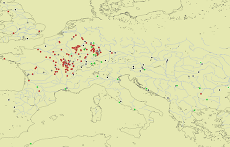
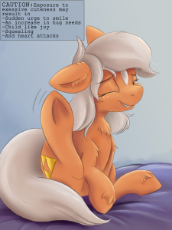
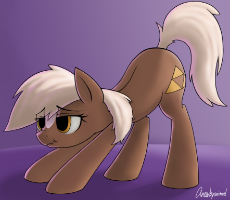
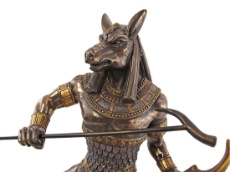

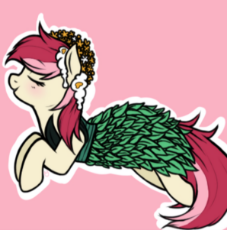
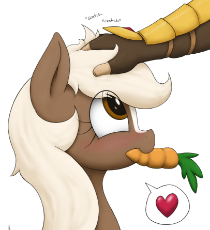


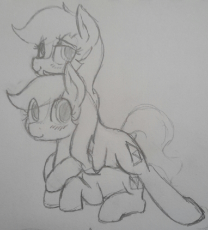
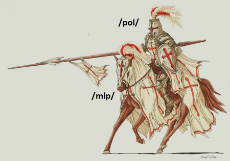


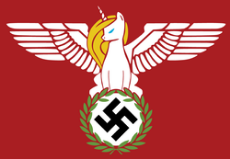
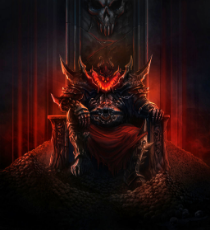


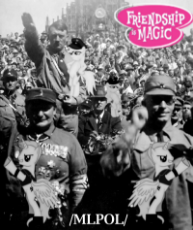


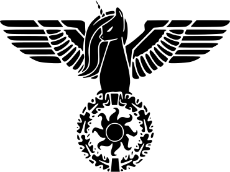

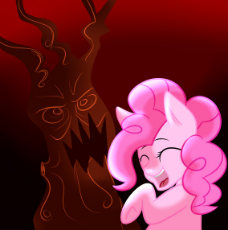

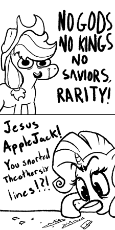
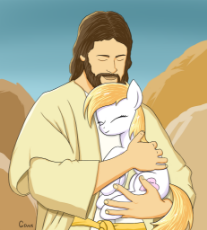
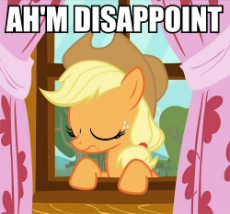
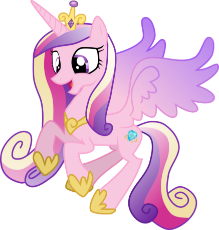



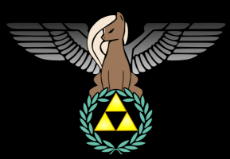
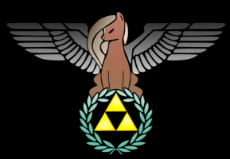

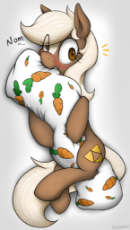

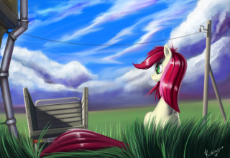





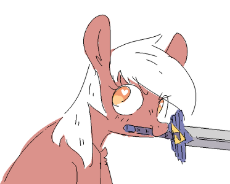

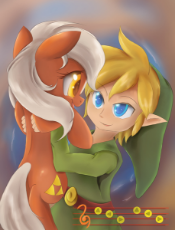

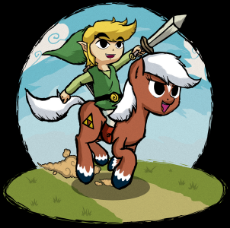
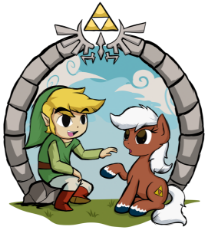
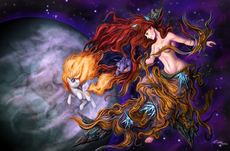



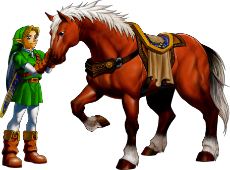


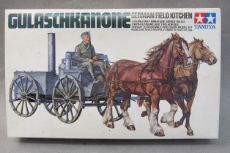

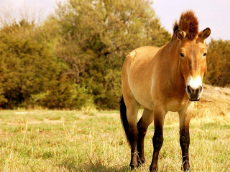
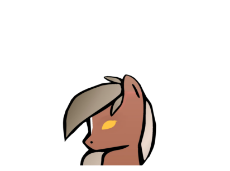
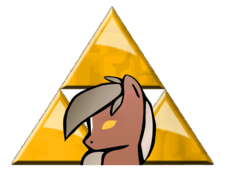

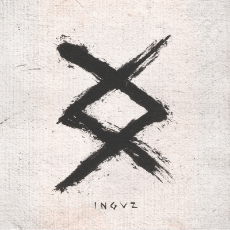
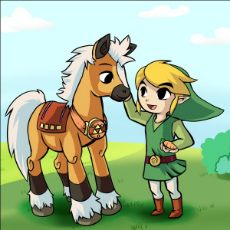




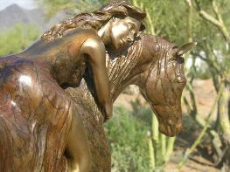
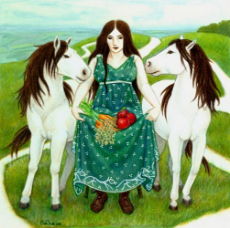

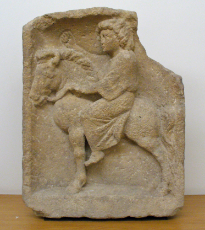
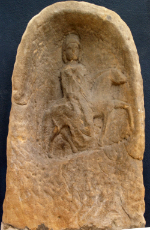
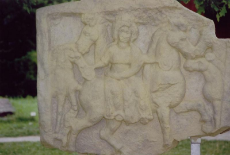
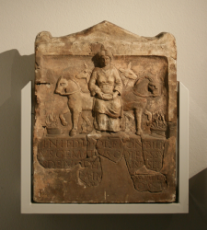
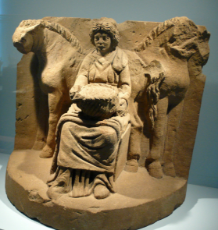



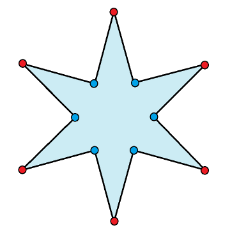
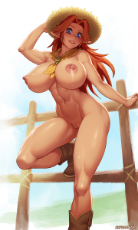


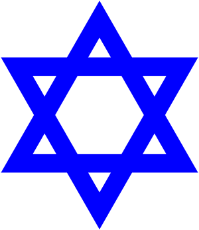

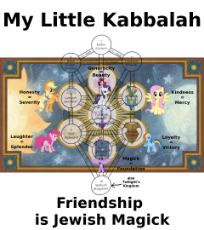
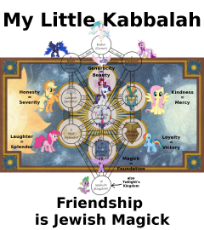
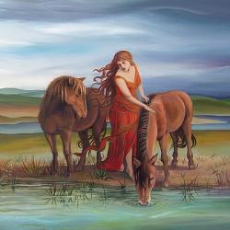
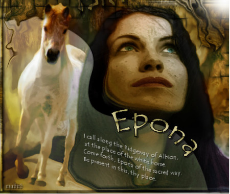




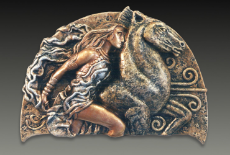
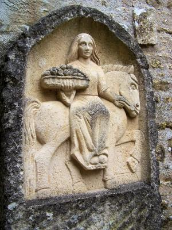
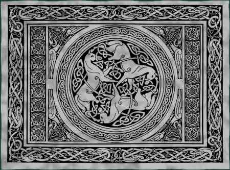
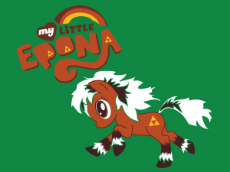
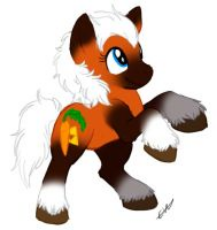
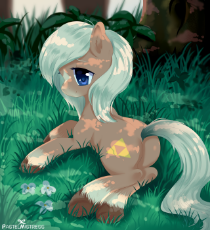
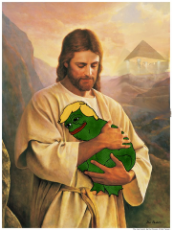

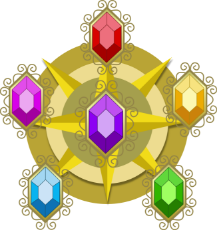
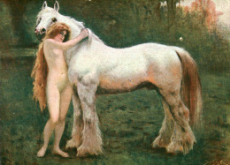



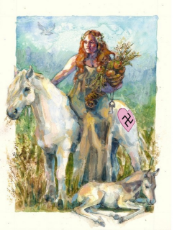
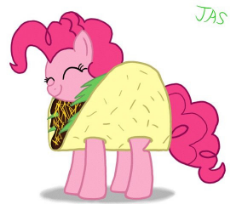


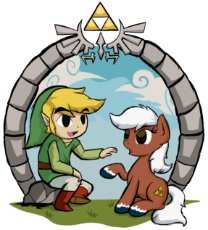
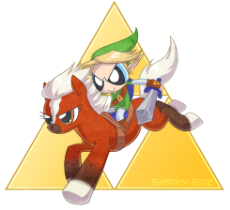
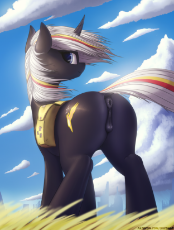
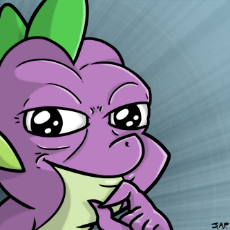
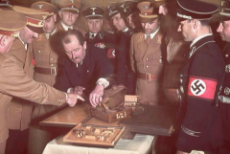
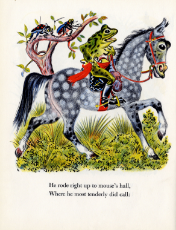


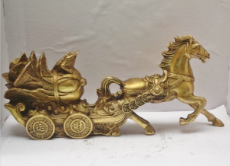

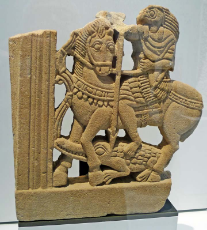


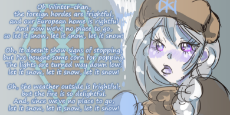
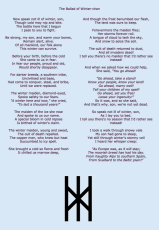
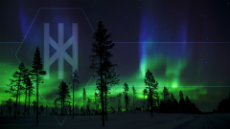
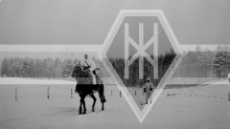
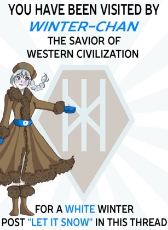
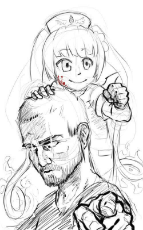

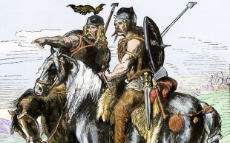
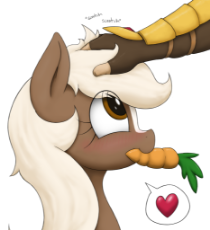


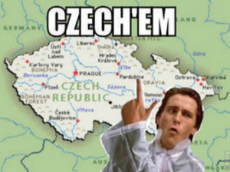
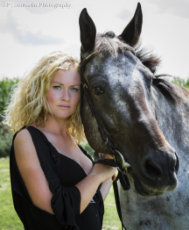
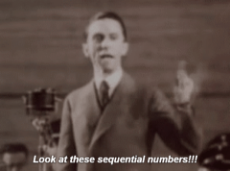


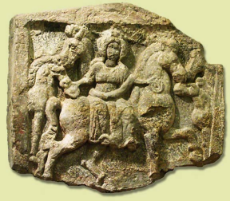
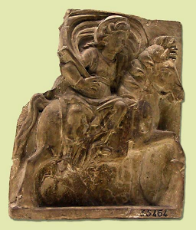
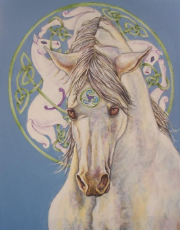
 Ex: Type :littlepip: to add Littlepip
Ex: Type :littlepip: to add Littlepip  Ex: Type :eqg-rarity: to add EqG Rarity
Ex: Type :eqg-rarity: to add EqG Rarity 